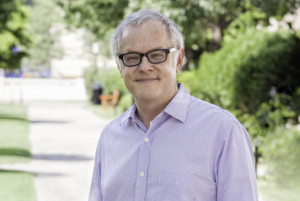
It has become compulsory for modern medical (or scientifically-relevant) shows to rely on a team of advisors and experts for maximal technical accuracy and verisimilitude on screen. Many of these shows have become so culturally embedded that they’ve changed people’s perceptions and influenced policy. Even the Gates Foundation has partnered with popular television shows to embed important storyline messages pertinent to public health, HIV prevention and infectious diseases. But this was not always the case. When Neal Baer joined ER as a young writer and simultaneous medical student, he became the first technical expert to be subsumed as an official part of a production team. His subsequent canon of work has reshaped the integration of socially relevant issues in television content, but has also ushered in an age of public health awareness in Hollywood, and outreach beyond it. Dr. Baer sat down with ScriptPhD to discuss how lessons from ER have fueled his public health efforts as a professor and founder of UCLA’s Global Media Center For Social Impact, including storytelling through public health metrics and leveraging digital technology for propelling action.
Neal Baer’s passion for social outreach and lending a voice to vulnerable and disadvantaged populations was embedded in his genetic code from a very young age. “My mother was a social activist from as long as I can remember. She worked for the ACLU for almost 45 years and she participated in and was arrested for the migrant workers’ grape boycott in the 60s. It had a true and deep impact on me that I saw her commitment to social justice. My father was a surgeon and was very committed to health care and healing. The two of them set my underlying drives and goals by their own example.” Indeed, his diverse interests and innate curiosity led Baer to study writing at Harvard and the American Film Institute and eventually, medicine at Harvard Medical School. Potentially presenting a professional dichotomy, it instead gave him the perfect niche — medical storytelling — that he parlayed into a critical role on the hit show ER.

During his seven-year run as medical advisor and writer on ER, Baer helped usher the show to indisputable influence and critical acclaim. Through the narration of important, germane storylines and communication of health messages that educated and resonated with viewers, ER‘s authenticity caught the attention of the health care community and inspired many television successors. “It had a really profound impact on me, that people learn from television, and we should be as accurate as possible,” Baer reflects. “[Viewers] believe it’s real, because we’re trying to make it look as real as possible. We’re responsible, I think. We can’t just hide behind the façade of: it’s just entertainment.” As show runner of Law & Order: SVU, Baer spearheaded a storyline about rape kit backlogs in New York City that led to a real-life push to clear 17,000 backlogged kits and established a foundation that will help other major US cities do the same. With the help of the CDC and USC’s prestigious Norman Lear Center, Baer launched Hollywood, Health and Society, which has become an indispensable and inexhaustible source of expert information for entertainment industry professionals looking to incorporate health storylines into their projects. In 2013, Baer co-founded the Global Media Center For Media Impact at UCLA’s School of Public Health, with the aim of addressing public health issues through a combination of storytelling and traditional scientific metrics.
Soda Politics
One of Baer’s seminal accomplishments at the helm of the Global Media Center was convincing public health activist Marion Nestle to write the book Soda Politics: Taking on Big Soda (And Winning). Nestle has a long and storied career of food and social policy work, including the seminal book Food Politics. Baer first took note of the nutritional and health impact soda was having on children in his pediatrics practice. “I was just really intrigued by the story of soda, and the power that a product can have on billions of people, and make billions of dollars, where the product is something that one can easily live without,” he says. That story, as told in Soda Politics, is a powerful indictment on the deleterious contribution of soda to the United States’ obesity crisis, environmental damage and political exploitation of sugar producers, among others. More importantly, it’s an anthology of the history of dubious marketing strategies, insider lobbying power and subversive “goodwill” campaigns employed by Big Soda to broaden brand loyalty.
Even more than a public health cautionary tale, Soda Politics is a case study in the power of activism and persistent advocacy. According to a New York Times expose, the drop in soda consumption represents the “single biggest change in the American diet in the last decade.” Nestle meticulously details the exhaustive, persistent and unyielding efforts that have collectively chipped away at the Big Soda hegemony: highly successful soda taxes that have curbed consumption and obesity rates in Mexico, public health efforts to curb soda access in schools and in advertising that specifically targets young children, and emotion-based messaging that has increased public awareness of the deleterious effects of soda and shifted preference towards healthier options, notably water. And as soda companies are inevitably shifting advertising and sales strategy towards , as well as underdeveloped nations that lack access to clean water, the lessons outlined in the narrative of Soda Politics, which will soon be adapted into a documentary, can be implemented on a global scale.
ActionLab Initiative
Few technological advancements have had an impact on television consumption and creation like the evolution of digital transmedia and social networking. The (fast-crumbling) traditional model of television was linear: content was produced and broadcast by a select conglomerate of powerful broadcast networks, and somewhat less-powerful cable networks, for direct viewer consumption, measured by demographic ratings and advertising revenue. This model has been disrupted by web-based content streaming such as YouTube, Netflix, Hulu and Amazon, which, in conjunction with fractionated networks, will soon displace traditional TV watching altogether. At the same time, this shifting media landscape has burgeoned a powerful new dynamic among the public: engagement. On-demand content has not only broadened access to high-quality storytelling platforms, but also provides more diverse opportunities to tackle socially relevant issues. This is buoyed by the increased role of social media as an entertainment vector. It raises awareness of TV programs (and influences Hollywood content). But it also fosters intimate, influential and symbiotic conversation alongside the very content it promotes. Enter ActionLab.
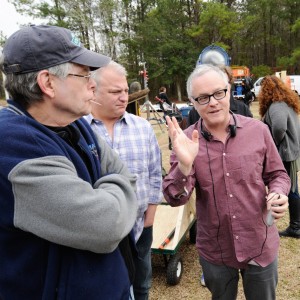
One of the critical pillars of the Global Media Center at UCLA, ActionLab hopes to bridge the gap between popular media and social change on topics of critical importance. People will often find inspiration from watching a show, reading a book or even an important public advertising campaign, and be compelled to action. However, they don’t have the resources to translate that desire for action into direct results. “We first designed ActionLab about five or six years ago, because I saw the power that the shows were having – people were inspired, but they just didn’t know what to do,” says Baer. “It’s like catching lightning in a bottle.” As a pilot program, the site will offer pragmatic, interactive steps that people can implement to change their lives, families and communities. ActionLab offers personalized campaigns centered around specific inspirational projects Baer has been involved in, such as the Soda Politics book, the If You Build It documentary and a collaboration with New York Times columnist Nicholas Kristof on his book/documentary A Path Appears. As the initiative expands, however, more entertainment and media content will be tailored towards specific issues, such as wellness, female empowerment in poor countries, eradicating poverty and community-building.
“We are story-driven animals. We collect our thoughts and our memories in story bites,” Baer notes. “We’re always going to be telling stories. We just have new tools with which to tell them and share them. And new tools where we can take the inspiration from them and ignite action.”
Baer joined ScriptPhD.com for an exclusive interview, where he discussed how his medical education and the wide-reaching impact of ER influenced his social activism, why he feels multi-media and cross-platform storytelling are critical for the future of entertainment, and his future endeavors in bridging creative platforms and social engagement.
ScriptPhD: Your path to entertainment is an unusual one – not too many Harvard Medical School graduates go on to produce and write for some of the most impactful television shows in entertainment history. Did you always have this dual interest in medicine and creative pursuits?
Neal Baer: I started out as a writer, and went to Harvard as a graduate student in sociology, [where] I started making documentary films because I wanted to make culture instead of studying it from the ivory tower. So, I got to take a documentary course, and it’s come full circle because my mentor Ed Pinchas made his last film called “One Cut, One Life” recently and I was a producer, before his demise from leukemia. That sent me to film school at the American Film Institute in Los Angeles as a directing fellow, which then sent me to write and direct an ABC after-school special called “Private Affairs” and to work on the show China Beach. I got cold feet [about the entertainment industry] and applied to medical school. I was always interested in medicine. My father was a surgeon, and I realized that a lot of the [television] work I was doing was medically oriented. So I went to Harvard Medical School thinking that I was going to become a pediatrician. Little did I know that my childhood friend John Wells, who had hired me on China Beach, would [also] hire me on “ER” by sending me the script, originally written by Michael Crichton in 1969, and dormant for 25 years until it was discovered in a trunk owned by Steven Spielberg. [Wells] asked me what I thought of the script and I said “It’s like my life only it’s outdated.” I gave him notes on how to update it, and I ultimately became one of the first doctor-writers on television with ER, which set that trend of having doctors on the show to bring verisimilitude.
SPhD: From the series launch in 1994 through 2000, you wrote 19 episodes and created the medical storylines for 150 episodes. This work ran parallel to your own medical education as a medical student, and subsequently an intern and resident. How did the two go hand in hand?
NB: I started writing on ER when I was still a fourth year medical student going back and forth to finish up at Harvard Medical School, and my internship at Children’s Hospital of Los Angeles over six years. And I was very passionate about bringing public health messages to the work that I was doing because I saw the impact that television can have on the audience, particularly the large numbers of people that were watching ER back then.
I was Noah Wylie’s character Dr. Carter. He was a third year [medical student], I was a fourth year. So I was a little bit ahead of him, and I was able to capture what it was like to be the low person on the totem pole and to reflect his struggles through many of the things my friends and I had gone through or were going through. Some of my favorite episodes we did were really drawn on things that actually happened. A friend of mine was sequestered away from the operating table but the surgeons were playing a game of world capitals. And she knew the capital of Zaire, when no one else did, so she was allowed to join the operating table [because of that]. So [we used] that same circumstance for Dr. Carter in an episode. Like you wouldn’t know those things, you had to live through them, and that was the freshness that ER brought. It wasn’t what you think doctors do or how they act but truly what goes on in real life, and a lot of that came from my experience.
SPhD: Do you feel like the storylines that you were creating for the show were germane both to things happening socially as well as reflective of the experience of a young doctor in that time period?
NB: Absolutely. We talked to opinion leaders, we had story nights with doctors, residents and nurses. I would talk to people like Donna Shalala, who was the head of the Department of Health and Human Safetey. I asked the then-head of the National Institutes of Health Harold Varmus, a Nobel Prize winner, “What topics should we do?” And he said “Teen alcohol abuse.” So that is when we had Emile Hirsch do a two-episode arc directly because of that advice. Donna Shalala suggested doing a story about elderly patients sharing perscriptions because they couldn’t afford them and the terrible outcomes that were happening. So we were really able to draw on opinion leaders and also what people were dealing with [at that time] in society: PPOs, all the new things that were happening with medical care in the country, and then on an individual basis, we were struggling with new genetics, new tests, we were the first show to have a lead character who was HIV-positive, and the triple cocktail therapy didn’t even come out until 1996. So we were able to be path-breaking in terms of digging into social issues that had medical relevance. We had seen that on other shows, but not to the extent that ER delved in.
SPhD: One of the legacies of a show like ER is how ahead of its time it was with many prescient storylines and issues that it tackled that are relevant to this very day. Are there any that you look back on that stand out to you in that regard as favorites?
NB: I really like the storyline we did with Julianna Margulies’s character [Nurse Carole Hathaway] when she opened up a clinic in the ER to deal with health issues that just weren’t being addressed, like cervical cancer in Southeast Asian populations and dealing with gaps in care that existed, particularly for poor people in this country, and they still do. Emergency rooms [treating people] is not the best way efficiently, economically or really humanely. It’s great to have good ERs, but that’s not where good preventative health care starts. The ethical dilemmas that we raised in an episode I wrote called “Who’s Happy Now?” involving George Clooney’s character [Dr. Doug Ross] treating a minor child who had advanced cystic fibrosis and wanted to be allowed to die. That issue has come up over and over again and there’s a very different view now about letting young people decide their own fate if they have the cognitive ability, as opposed to doing whatever their parents want done.
SPhD: You’ve had an Appointment at UCLA since 2013 at the Fielding School of Global Health as one of the co-founders of the Global Media Center for Social Impact, with extremely lofty ambitions at the intersection of entertainment, social outreach, technology and public health. Tell me a bit about that partnership and how you decided on an academic appointment at this time in your life.
NB: Well, I’m still doing TV. I just finished a three-year stint running the CBS series Under the Dome, which was a small-scale parable about global climate change. While I was doing that, I took this adjunct professorship at UCLA because I felt that there’s a lot we don’t know about how people take stories, learn them, use them, and I wanted to understand that more. I wanted to have a base to do more work in this area of understanding how storytelling can promote public health, both domestically and globally. Our mission at the Global Media Center for Social Impact (GMI) is to draw on both traditional storytelling modes like film, documentaries, music, and innovative or ‘new’ or transmedia approaches like Facebook, Twitter, Instagram, graphic novels and even cell phones to promote and tell stories that engage and inspire people and that can make a difference in their lives.
SPhD: One of the first major initiatives is a very important book “Soda Politics” by the public health food expert Dr. Marion Nestle. You were actually partially responsible for convincing her to write this book. Why this topic and why is it so critical right now?
NB: I went to Marion Nestle because I was convinced after having read a number of studies, particularly those by Kelly Brownell (who is now Dean of Public Policy at Duke University), that sugar-sweetened sodas are the number one contributor to childhood obesity. Just [recently], in the New York Times, they chronicled a new study that showed that obesity is still on the rise. That entails horrible costs, both emotionally and physically for individuals across this country. It’s very expensive to treat Type II diabetes, and it has terrible consequences – retinal blindness, kidney failure and heart disease. So, I was very concerned about this issue, seeing large numbers of kids coming into Children’s Hospital with Type II diabetes when I was a resident, which we had never seen before. I told Marion Nestle about my concerns because I know she’s always been an advocate for reducing the intake and consumption of soda, so I got [her] research funds from the Robert Wood Johnson Foundation. What’s really interesting is the data on soda consumption really aren’t readily available and you have to pay for it. The USDA used to provide it, but advocates for the soda industry pushed to not make that data easily available. I [also] helped design an e-book, with over 50 actionable steps that you can take to take soda out of the home, schools and community.
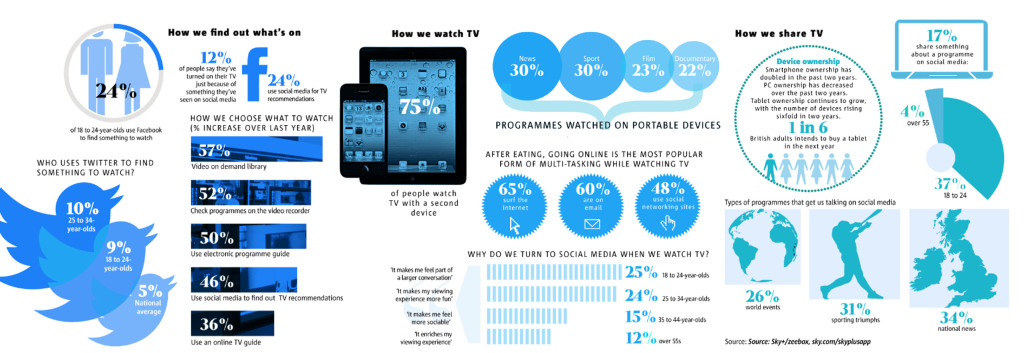
SPhD: How has social media engagement via our phones and computers, directly alongside television watching, changed the metric for viewing popularity, content development and key outreach issues that you’re tackling with your ActionLab initiative?
NB: ActionLab does what we weren’t [previously] able to do, because we have the web platforms now to direct people in multi-directional ways. When I first started on ER in 1994, television and media were uni-directional endeavors. We provided the content, and the viewer consumed it. Now, with Twitter [as an example], we’ve moved from a uni-directional to a multi-directional approach. People are responding, we are responding back to them as the content creators, they’re giving us ideas, they’re telling us what they like, what they don’t like, what works, what doesn’t. And it’s reshaping the content, so it’s this very dynamic process now that didn’t exist in the past. We were really sheltered from public opinion. Now, public opinion can drive what we do and we have to be very careful to put on some filters, because we can’t listen to every single thing that is said, of course. But we do look at what people are saying and we do connect with them in ways they never had access to us before.
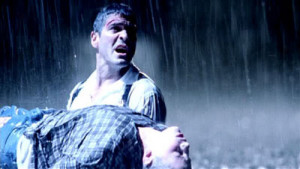
This multi-directional approach is not just actors and writers and directors discussing their work on social media, but it’s using all of the tools of the internet to build a new way of storytelling. Now, anyone can do their own shows and it’s very inexpensive. There are all kinds of YouTube shows on now that are watched by many people. It’s a kind of Wild West, where anything goes and I think that’s very exciting. It’s changed the whole world of how we consume media. I [wrote] an episode of ER 20 years ago with George Clooney, where he saved a young boy in a water tunnel, that was watched by 48 million people at once. One out of six Americans. That will never happen again. So, we had a different kind of impact. But now, the media landscape is fractured, and we don’t have anywhere near that kind of audience, and we never will again. It’s a much more democratic and open world than it used to be, and I don’t even think we know what the repercussions of that will be.
SPhD: If you had a wish list, what are some other issues or global obstacles that you’d love to see the entertainment world (and media) tackle more than they do?
NB: In terms of specifics, we really need to talk about civic engagement, and we need to tell stories about how [it] can change the world, not only in micro-ways, say like Habitat For Humanity or programs that make us feel better when we do something to help others, but in a macro policy-driven way, like asking how we are going to provide compulsory secondary education around the world, particularly for girls. How do we instate that? How do we take on child marriage and encourage countries, maybe even through economic boycotts, to raise the age of child marriage, a problem that we know places girls in terrible situations, often with no chance of ever making a good living, much less getting out of poverty. So, we need to think both macroly and microly in terms of our storytelling. We need to think about how to use the internet and crowdsourcing for public policy and social change. How can we amalgamate individuals to support [these issues]? We certainly have the tools now, with Facebook, Twitter and Instagram, and our friends and social networks, to spread the word – and a very good way to spread the word is through short stories.
SPhD: You’ve enjoyed a storied career, and achieved the pinnacle of success in two very competitive and difficult industries. What drives Dr. Neal Baer now, at this stage of your life?
NB: Well, I keep thinking about new and innovative ways to use trans media. How do I use graphic novels in Africa to tell the story of HIV and prevention? How do we use cell phones to tell very short stories that can motivate people to go and get tested? Innovative financing to pay for very expensive drugs around the world? So, I’m very much interested in how storytelling gets the word out, because stories don’t just change minds, they change hearts. Stories tickle our emotions in ways that I think we don’t fully understand yet. And I really want to learn more about that. I want to know about what I call the “epigenetics of storytelling.” I’m writing a book about that, looking into research that [uncovers] how stories actually change our brain and how do we use that knowledge to tell better stories.
Neal Baer, MD is a television writer and producer behind hit shows China Beach, ER, Law & Order SVU, Under The Dome, and others. He is a graduate of Harvard University Medical School and completed a pediatrics internship at Children’s Hospital Los Angeles. A former co-chair of USC’s Norman Lear Center Hollywood, Health and Society, Dr. Baer is the founder of the Global Media Center for Social Impact at the Fielding School of Global Health at UCLA.
*****************
ScriptPhD.com covers science and technology in entertainment, media and advertising. Hire our consulting company for creative content development. Follow us on Twitter and Facebook. Subscribe to our podcast on SoundCloud or iTunes.
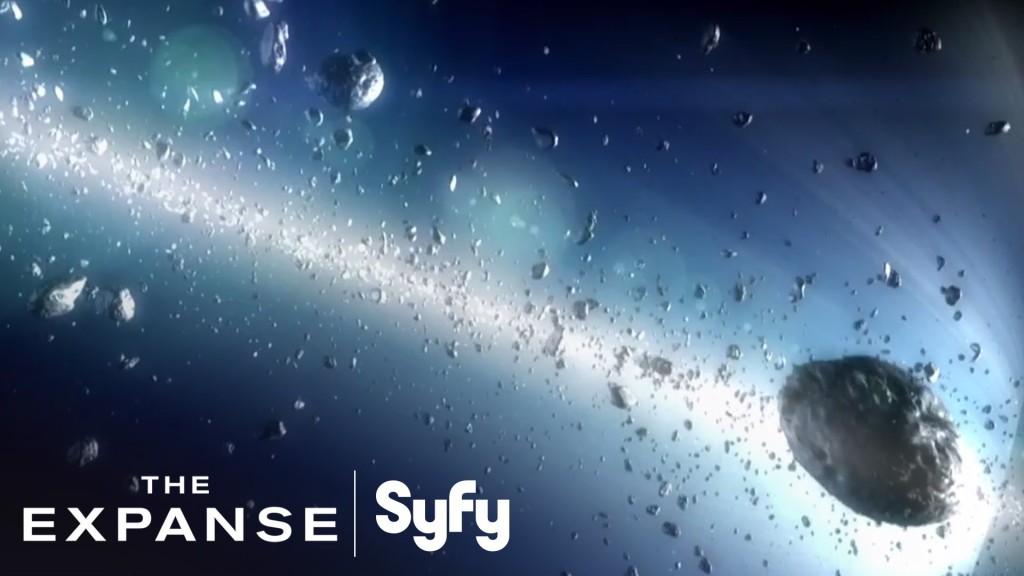
Space exploration is enjoying its greatest popularity revival since the Cold War, both in entertainment and the realm of human imagination. Thanks in large part to blockbusters like Gravity, The Martian and Interstellar, not to mention privatized innovation from companies like SpaceX, and fascination with inter-galactic colonization has never been more trenchant. Despite the brimming enthusiasm, there hasn’t been a film or TV series that has tackled the subject matter in a nuanced way. Until now. The Expanse, ambitiously and faithfully adapted by SyFy Channel from the best-selling sci-fi book series, is the best space epic series since Battlestar Galactica. It embraces similar complex, grandiose and ethically woven storylines of human survival and morality amidst inevitable technological advancement. Below, a full ScriptPhD review and in-depth podcast with The Expanse showrunner Naren Shankar.
200 years in future, humans have successfully colonized space, but not without discord. The Earth, overpopulated and severely crunched for resources, has expanded to the asteroid belt and a powerful, wealthy and now-autonomous Mars. Though the colonies of the asteroid belt are controlled by Earth (largely to pillage materials and water), its denizens are second-class citizens, exploited by wealthy corporations for deadly labor. Inter-colony friction, class warfare, resource allocation and uprising frame the backdrop for a political standoff between Mars and Earth that could destroy humanity.
Deeper questions of righteous terrorism, political conspiracy and human rights are embodied in a triumvirate of smart, interweaving plots that will eventually coalesce to unravel the fundamental mystery. Josephus Miller (Thomas Jane) is a great detective, but a lowly belter and miserable alcoholic, mostly paid to settle minor Belt security and corporate matters. But when he’s hired to botch an investigation into the disappearance of a wealthy Earth magnate’s family, Miller starts to uncover dangerous connections between political unrest and the missing heiress. Jim Holden (Steven Strait) is a reluctant hero – a “Belter” ship captain thrown into a tragic quest for justice – who unwittingly leads his mates directly into the conflict between Mars and Earth and, as he delves deeper, unravels a potentially calamitous galactic threat. Finely balancing this tightwire is Chrisjen Avasarala (Shohreh Aghdashloo), the Deputy Undersecretary of the United Nations, who must balance the moral quandaries of peacekeeping with a steely determination to avoid war at all costs.
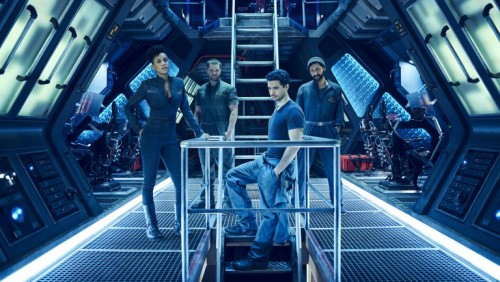
Colonization is a very trendy topic right now in space and astrophysics circles, particularly on Mars, having discovered liquid water, which fosters favorable conditions for the evolution and sustainability of life. Could it ever actually happen? There would certainly be considerable engineering and habitability obstacles.
For now, modest manned exploration of Mars and Europa by human astronauts is a tentative first step for NASA.
The Expanse assumes all these challenges and explorations have ben overcome, and picks up at a time when humans biggest problem isn’t conquering space – it’s conquering each other. The show is sleek and very technologically adept, in direct visual contrast to the more dilapidated environment of Battlestar Galactica. Fans of geek chic technology can ogle at complex docking stations as ships move around the belt to and from Earth and Mars, see through tablets, pills that induce omniscience during interrogations and ubiquitous voice-controlled artificial intelligence. However, though a new way of life has been established, remnants of our current quotidian existence and human essence are still instantly recognizable. This isn’t the techno-invasive dystopia of Blade Runner or Minority Report.

Like, Battlestar Galactica, (a show The Expanse will invariably be compared to) there is a crisp, smart overarching commentary on human existentialism under tense circumstances. Survival and life in space. Adapting to the changing gravitational forces and physical conditions of travel between planets and the asteroid belt colonies. Most importantly, navigating the incendiary dynamics of a species on the brink of all-out galactic warfare. As show runner Naren Shankar mentions in our podcast below, all great sci-fi is historically rooted in allegory – the exploration of disruptive technological innovation (and the fear thereof) as a symbol of combating inequality and/or political injustice. At a time of great social upheaval in our world, a fight for dwindling global resources and against proliferating environmental devastation, many of the themes explored in The Expanse books and series are eerily salient. Perhaps they also act as a reminder that even if a technological revolution facilitates an eventual expansion into outer space, our tapestry of inclinations (good and bad) is sure to follow.
Naren Shankar, the executive producer and show runner of The Expanse, helped develop the adaptation of the sci-fi series buoyed by decades of merging the creative compasses of science and entertainment. A PhD-educated physicist and engineer, Shankar was a writer/producer on Star Trek: The Next Generation, Almost Human and Grimm, as well as a co-showrunner of the groundbreaking forensics procedural CSI. Dr. Shankar exclusively joined the ScriptPhD.com podcast to discuss his transition from PhD scientist to working Hollywood writer, the lasting iconic impact of Star Trek and CSI and how The Expanse evokes the best allegory and elements of the sci-fi genre to tell an existential narrative. Listen below:
*****************
ScriptPhD.com covers science and technology in entertainment, media and advertising. Hire our consulting company for creative content development. Follow us on Twitter and Facebook. Subscribe to our podcast on SoundCloud or iTunes.
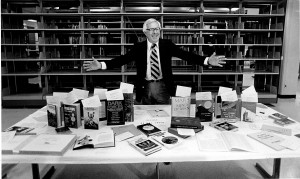
Ray Bradbury, one of the most influential and prolific science fiction writers of all time, has had a lasting impact on a broad array of entertainment culture. In his canon of books, Bradbury often emphasized exploring human psychology to create tension in his stories, which left the more fantastical elements lurking just below the surface. Many of his works have been adapted for movies, comic books, television, and the stage, and the themes he explores continue to resonate with audiences today. The notable 1966 classic film Fahrenheit 451 perfectly captured the definition of a futuristic dystopia, for example, while the eponymous television series he penned, The Ray Bradbury Theatre, is an anthology of science fiction stories and teleplays whose themes greatly represented Bradbury’s signature style. ScriptPhD.com was privileged to cover one of Ray Bradbury’s last appearances at San Diego Comic-Con, just prior to his death, where he discussed everything from his disdain for the Internet to his prescient premonitions of many technological advances to his steadfast support for the necessity of space exploration. In the special guest post below, we explore how the latest Bradbury adapataion, the new television show The Whispers, continues his enduring legacy of psychological and sci-fi suspense.
Premiering to largely positive reviews, ABC’s new show The Whispers is based on Bradbury’s short story “Zero Hour” from his book The Illustrated Man. Both stories are about children finding a new imaginary friend, Drill, who wants to play a game called “Invasion” with them. The adults in their lives are dismissive of their behavior until the children start acting strangely and sinister events start to take place. Bradbury’s story is a relatively short read with just a few characters that ends on a chilling note, while The Whispers seeks to extend the plot over the course of at least one season, and to that end it features an expanded cast including journalists, policemen, and government agents.
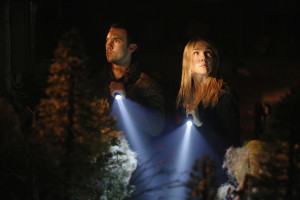
The targeting of young, impressionable minds by malevolent forces is deeply disturbing, and it seems entirely plausible that parents would write off odd behavior or the presence of imaginary friends as a simple part of growing up. In both the story and the show, the adults do not realize that they are dealing with a very real and tangible threat until it’s too late. The dread escalates when the adults realize that children who don’t know each other are all talking to the same person. The fear of the unknown, merely hinted at in Bradbury’s story, will seem to be exploited to great effect during the show’s run.
When “Zero Hour” was written in 1951, America was in the midst of McCarthyism and the Red Scare, and the fear of Communism and homosexuality ran rampant. As the tensions of the Cold War grew, so too did the anxiety that Communists had infiltrated American society, with many of the most aggressively targeted individuals for “un-American” activities belonging to the Hollywood filmmaking and writing communities. Bradbury’s story shares with many other fictions of the time period a healthy dose of paranoia and fear around possession and mind control. Indeed, Fahrenheit 451, a parable about a futuristic world in which books are banned, is also a parable about the dangers of censorship and political hysteria.
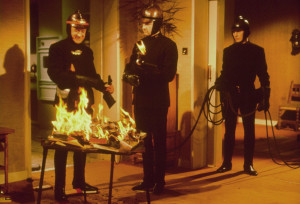
The makers of The Whispers recognize that these concerns still permeate our collective consciousness, and have updated the story with modern subject matter, expanding the subject of our apprehension to state surveillance and abuse of authority. To wit, many recent films and shows have explored similar themes amidst the psychological ramifications of highly developed artificial intelligence and its ability to control and even harm humans. Our concurrent obsession with and fear of technology run amok is another topic explored by Ray Bradbury in many of his later works. The idea that those around us are participating in a grand scheme that will bring us harm still sows seeds of discontent and mistrust in our minds. For that reason, the concept continues to be used in suspense television and cinema to this day.
One of the reasons Bradbury’s work continues to serve as the inspiration for so much contemporary entertainment is his use of everyday situations and human oddities to create intrigue. One such example is a 5-issue series called Shadow Show based on Bradbury’s work, released in 2014 by comic book publisher IDW. Some of the best artists, writers and comics had agreed to participate in this project since Bradbury had such a huge influence in their writing and art. In this anthology, Harlan Ellison’s “Weariness” perfectly elicits Bradbury’s dystopia in which our main characters experience the universe’s end. The terrifying end of life as we know it is one of Bradbury’s recurring themes, depicted in writings like The Martian Chronicles. He rarely felt the need to set his stories in faraway galaxies or adorn them with futuristic gadgets. Most of his writing focussed on the frightening aspects of humans in quotidien surroundings, such as in the 2002 novel, Let’s All Kill Constance. Much of The Whispers takes place in an ordinary suburban neighborhood, and like many of his stories, what seems at first to be a simple curiosity, is hiding something much more complex and frightening.
Fiction that brings out the spookiness inherent in so many facets of human nature creates a stronger and more enduring bond with its audience, since we can easily deposit ourselves into the characters’ situations, and all of a sudden we find that we’re directly experiencing their plight on an emotional level. That’s always been, as Bradbury well knew, the key to great suspense.
Maria Ramos is a tech and sci-fi writer interested in comic books, cycling, and horror films. Her hobbies include cooking, doodling, and finding local shops around the city. She currently lives in Chicago with her two pet turtles, Franklin and Roy. You can follow her on Twitter @MariaRamos1889.
*****************
ScriptPhD.com covers science and technology in entertainment, media and advertising. Hire our consulting company for creative content development. Follow us on Twitter and Facebook. Subscribe to our podcast on SoundCloud or iTunes.
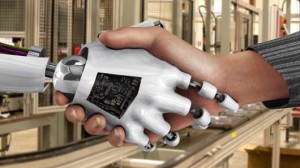
From a sci-fi and entertainment perspective, 2015 may undoubtedly be nicknamed “The Year of The Robot.” Several cinematic releases have already explored various angles of futuristic artificial intelligence (from the forgettable Chappie to the mainstream blockbuster Marvel’s Avengers: Age of Ultron to the intelligent sleeper indie hit Ex Machina), with several more on the way later this year. Two television series premiering this summer, limited series Humans on AMC and Mr. Robot on USA add thoughtful, layered (and very entertaining) discussions on the ethics and socio-economic impact of the technology affecting the age we live in. While Humans revolves around hyper-evolved robot companions, and Mr. Robot a singular shadowy eponymous cyberhacking organization, both represent enthusiastic Editor’s Selection recommendations from ScriptPhD. Reviews and an exclusive interview with Humans creators/writers Jonathan Brackley and Sam Vincent below.

Never in human history has technology and its potential reached a greater permeation of and importance in our daily lives than at the current moment. Indeed, it might even be changing the way our brains function! With entertainment often acting as a reflection of socially pertinent issues and zeitgeist motifs, it’s only natural to examine the depths to which robots (or any artificial technology) might subsume human life. Will they take over our jobs? Become smarter than us? Nefariously affect human society? These fears about the emotional lines between humans and their technology are at the heart of AMC’s new limited series Humans. It is set in the not-too-distant future, where the must have tech accessory is a ‘synth,’ a highly malleable, impeccably programmed robotic servant capable of providing any services – at the individual, family or macro-corporate level. It’s an idyllic ambition, fully realized. Busy, dysfunctional parents Joe and Laura obtain family android Anita to take care of basic housework and child rearing to free up time. Beat cop Pete’s rehabilitation android is indispensable to his paralyzed wife. And even though he doesn’t want a new synth, scientist George Millikan is thrust with a ‘care unit’ Vera by the Health Service to monitor his recovery from a stroke. They can pick fruit, clean up trash, work mindlessly in factories and sweat shops make meals, even provide service in brothels – an endless range of servile labor that we are uncomfortable or unwilling to do ourselves.
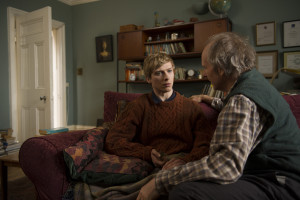
Humans brilliantly weaves the problems of this artificial intelligence narrative into multiple interweaving story lines. Anita may be the perfect house servant to Joe, but her omniscience and omnipresence borders on creepiness to wife Laura (and by proxy, the audience). Is Dr. Millikan (who helped craft the original synth technology) right that you can’t recycle them the way you would an old iPhone model? Or is he naive for loving his synth Odi like a son? And even if you create a Special Technologies Task Force to handle synth-related incidents, guaranteeing no harm to humans and minimal, if any, malfunctions, how can there be no nefarious downside to a piece of technology? They could, in theory, be obtained illegally and reprogrammed for subversive activity. If the original creator of the synths wanted to create a semblance of human life – “They were meant to feel,” he maintains – then are we culpable for their enslaved state? Should we feel relieved to see a synth break out of the brothel she’s forced to work in, or another mysterious group of synths that have somehow become sentient unite clandestinely to dream of a dimension where they’re free?
In reality, we already are in the midst of an age of artificial intelligence – computers. Powerful, fast, already capable of taking over our workforce and reshaping our society, they are the amorphous technological preamble to more specifically tailored robots, incurring all of the same trepidation and uncertainty. Mr. Robot, one of the smartest TV pilots in recent memory, is a cautionary tale about cyberhacking, socioeconomic vulnerability and the sheer reliance our society unknowingly places in computers. Its central themes are physically embodied in the central character of Elliot, a brilliant cybersecurity engineer by day/vigilante cyberhacker by night, battling schizophrenia and extreme social anxiety. To Elliott, the ubiquitous nature of computer power is simultaneously appealing and repulsive. Everything is electronic today – money, corporate transactions, even the way we communicate socially. As a hacker, he manipulates these elements with ease to get close to people and to solve injustice (carrying a Dexter-style digital cemetery of his conquests). But as someone who craves human contact he loathes the way technology has deteriorated human interaction and encouraged nameless, faceless corporate greed.

Elliot works for Allstate Security, whose biggest client is an emblem of corporate evil and economic diffidence. When they are hacked, Elliot discovers that it’s a private digital call to arms by a mysterious underground group called Mr. Robot (resembling the cybervigilante group Anonymous). They’ve hatched a plan to to concoct a wide-scale economic cyber attack that will result in the single biggest redistribution of wealth and debt forgiveness in history, and recruited Elliot into their organization. The question, and intriguing premise of the series, is whether Elliot can juggle his clean-cut day job, subversive underground hacking and protecting society one cyberterrorist act at a time, or if they will collapse under the burden of his conscience and mental illness.
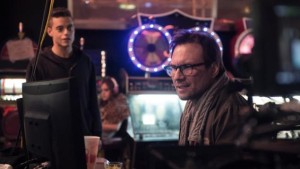
Humans is a purview into the inevitable future, albeit one that may be creeping on us faster than we want it to. Even if hyper-advanced artificial intelligence is not an imminent reality and our fears might be overblown, the impact of technology on economics and human evolution is a reality we will have to grapple with eventually. And one that must inform the bioethics of any advanced sentient computing technology we create and release into the world. Mr. Robot is a stark reminder of our current present, that cyberterrorism is the new normal, that its global impact is immense, and (as with the case of artificial robots), our advancement of and reliance on technology is outpacing humans’ ability to control it.
ScriptPhD.com was extremely fortunate to chat directly with Humans writers Jonathan Brackley and Sam Vincent about the premise and thematic implications of their show. Here’s what they had to say:
ScriptPhD.com: Is “Humans” meant to be a cautionary tale about the dangers of complex artificial intelligence run amok or a hypothetical bioethical exploration of how such technology would permeate and affect human society?
Jonathan and Sam: Both! On one level, the synths are a metaphor for our real technology, and what it’s doing to us, as it becomes ever more human-like and user-friendly – but also more powerful and mysterious. It’s not so much hypothesising as it is extrapolating real world trends. But on a deeper story level, we play with the question – could these machines become more, and if so, what would happen? Though “run amok” has negative connotations – we’re trying to be more balanced. Who says a complex AI given free rein wouldn’t make things better?
SPhD: I found it interesting that there’s a tremendous range of emotions in how the humans related to and felt about their “synths.” George has a familial affection for his, Laura is creeped out/jealous of hers while her husband Joe is largely indifferent, policeman Peter grudgingly finds his synth to be a useful rehabilitation tool for his wife after an accident. Isn’t this reflective of the range of emotions in how humans react to the current technology in our lives, and maybe always will?
J&S: There’s always a wide range of attitudes towards any new technology – some adopt enthusiastically, others are suspicious. But maybe it’s become a more emotive question as we increasingly use our technology to conduct every aspect of our existence, including our emotional lives. Our feelings are already tangled up in our tech, and we can’t see that changing any time soon.
SPhD: Like many recent works exploring Artificial Intelligence, at the root of “Humans” is a sense of fear. Which is greater – the fear of losing our flaws and imperfections (the very things that make us human) or the genuine fear that the sentient “synths” have of us and their enslavement?
J&S: Though we show that synths certainly can’t take their continued existence for granted, there’s as much love as fear in the relationships between our characters. For us, the fear of how our technology is changing us is more powerful – purely because it’s really happening, and has been for a long time. But maybe it’s not to be feared – or not all of it at least…
Catch a trailer and closer series look at the making of Humans here:
And catch the FULL first episode of Mr. Robot here:
Mr. Robot airs on USA Network with full episodes available online.
Humans premieres on June 28, 2015 on AMC Television (USA) and airs on Channel 4 (UK).
*****************
ScriptPhD.com covers science and technology in entertainment, media and advertising. Hire our consulting company for creative content development. Follow us on Twitter and Facebook. Subscribe to our podcast on SoundCloud or iTunes.
As part of an ongoing recommitment to its sci-fi genre roots, SyFy Channel is unveiling the original scripted drama Ascension, for now a six hour mini-series, and possible launch for a future series. It follows a crew aboard the starship Ascension, as part of a 1960s mission that sent 600 men, women and children on a 100 year planned voyage to populate a new world. In the midst of political unrest onboard the vessel, the approach of a critical juncture in the mission and the first-ever murder onboard the craft, the audience soon learns, there is more to the mission than meets the eye. Which can also be said of this multi-layered, ambitious, sophisticated mini-series. Full ScriptPhD review below.
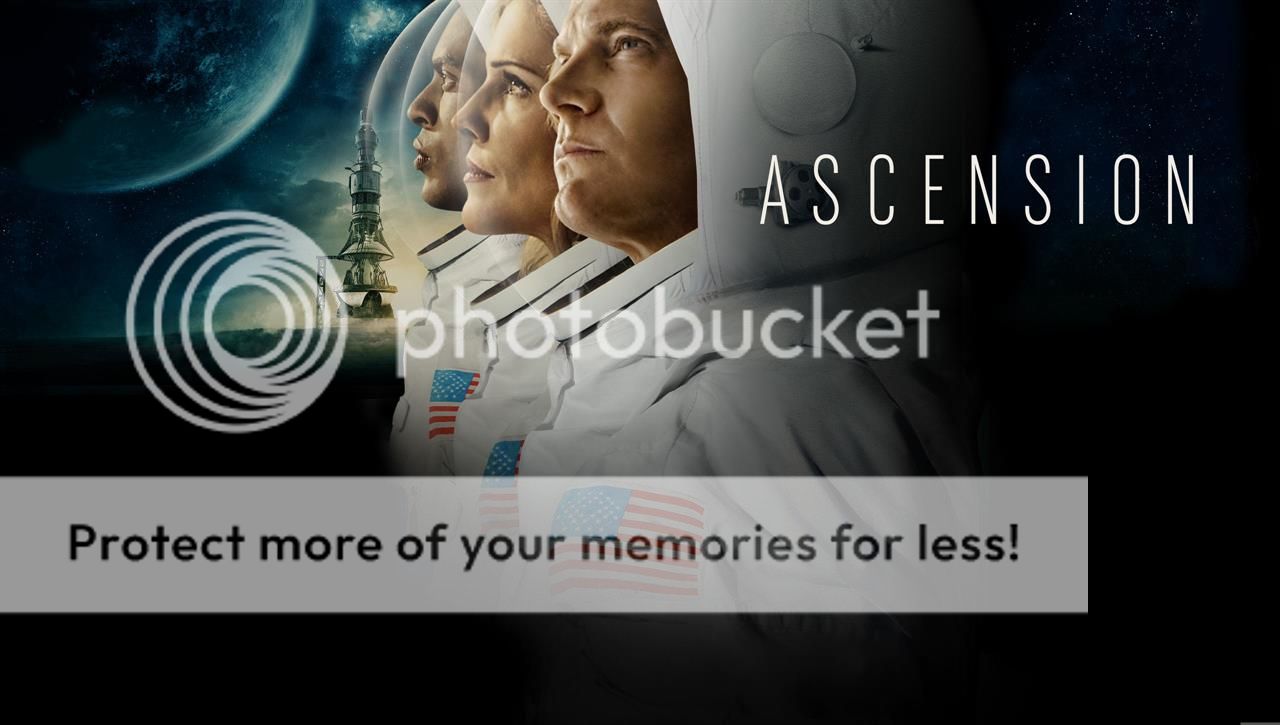
In the late 1950s and early 1960s, largely fueled by the heigh of Cold War tensions with the Soviet Union and fears of mutual nuclear destruction, the United States government, in conjunction with NASA, launched a project that would have sent 150 people into various corners of space — from the Moon, to Mars and eventually Saturn. Code-named Orion, the project officially launched in 1958 at General Atomics in San Diego under the leadership of nuclear researcher Frederick deHoffman, Los Alamos weapons specialist Theodore Taylor and theoretical physicist Freeman Dyson. Largely fueled by Dyson, Orion’s aim was to build a spacecraft equipped with atomic bombs, that would propel the rocket further and further into space through a series of well-timed explosions (nuclear propulsion). The partial test ban treaty of 1963 ended the grandiose project, which remains classified to this day.
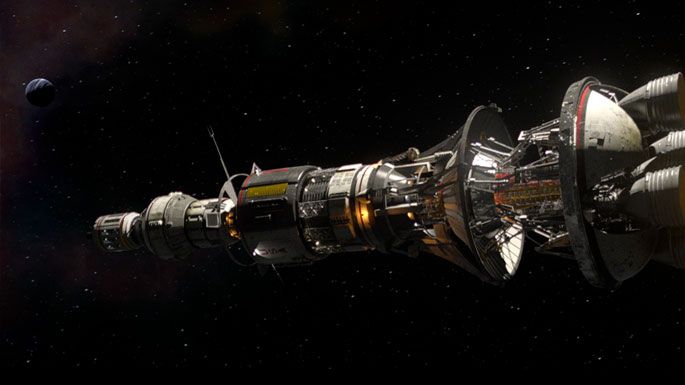
Ascension is the seamless fictional transition borne of asking “what if” questions about the erstwhile Project Orion. What if it never ended? What if it was still ongoing? What would be the psychological ramifications of entire generations of people born, raised and living on a closed vessel? Is human habitation of other planets an uncertainty or inevitability? And so Project Orion continued on as Project Ascension, under the hands of Abraham Enzmann. A crew of 600 was sent off into space not knowing the fate of humanity, frozen in time, and as far as they know — all that would be left of mankind.
Ascension carries on in the vein of stylish series such as Caprica, Helix and Defiance, with sleek sci-fi gadgetry and a spaceship capable of mimicking an entire world (including a beach!) for 100 years. This is no dilapidated, aging Battlestar Galactica. However, because time is frozen in the 1960s, all technology, clothes and cultural collections reflect that era — think Mad Men in space. Nostalgia reigns with references to the Space Race via speeches from President Kennedy, along with film and television cornerstones of that era.
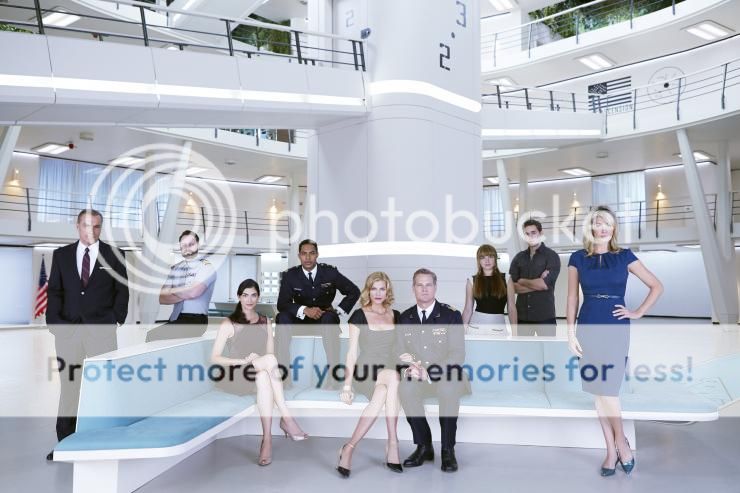
51 years into the mission, on the evening of the annual launch party celebration, a kind of Ascension independence day, the unthinkable happens: the first ever murder onboard the ship. Captain William Denninger puts first officer Aaron Gault in charge of investigating. Soon, the motives for the murder become convoluted amidst internal politics and the looming “Insurrection,” a point of no return in which communication with Earth is no longer possible.
This year’s space epic Interstellar explored the science of traveling 10 billion light years away from Earth – ambitiously but not without factual fault. And to be sure, Ascension will address the challenges and physics of nuclear propulsion to the far reaches of space, starting with a radiation storm midway through the first episode. But rather than bogging itself down in the astrophysical minutiae of space travel, Ascension smartly focuses on the human drama and existential questions such a voyage would incur, precisely what made Battlestar Galactica such compelling sci-fi television. Would there be internal psychological ramifications to this journey? All residents of the ship seem to go through an adolescent period termed “The Crisis,” where they come to grips with the fact that they have no future, and a pre-determined fate. Furthermore, the murder victim’s young sister appears to be a “seer” with telekinetic insight into the nefarious inner workings of the ship.
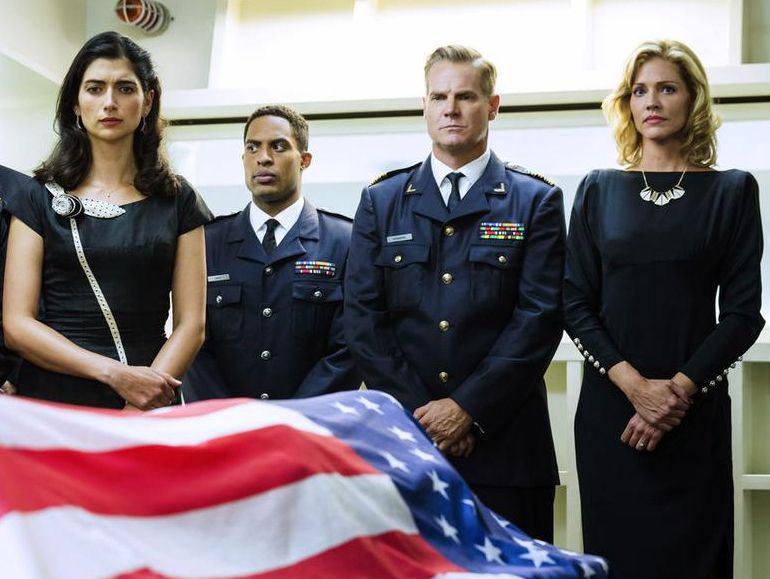
Would there be class division and political turmoil aboard such a confined community? There is a decidedly troublesome rift between the ranking officers of the upper quarters and the “Below Deckers”: butchers, steelworkers and other blue-collar craftsmen that appear on the edge of a revolt. Compounding their efforts are the Captain’s wife, Viondra Denninger (whom fans will recognize as Cylon Number Six from BSG), a cunning, manipulative power broker and the man seeking to wrestle control of the ship from her husband. Back on Earth, we meet Harris Enzmann, the son of the dying Project Ascension founder. Seemingly a low level government engineer, nor remotely interested in preserving his father’s legacy, his role in Project Ascension is convoluted yet significant.
Project Ascension is indeed an experiment critical for human survival — just not the one anyone onboard thinks it is. Amidst an awakened collective imagination about space exploration, including 2015’s IMAX Mars mission movie Journey To Space, this is one sci-fi mission worth taking.
View a trailer for Ascension:
Ascension is a three-day mini-series event on SyFy Channel, beginning Monday, December 15.
~*ScriptPhD*~
*****************
ScriptPhD.com covers science and technology in entertainment, media and advertising. Hire us for creative content development.
Subscribe to free email notifications of new posts on our home page.
]]>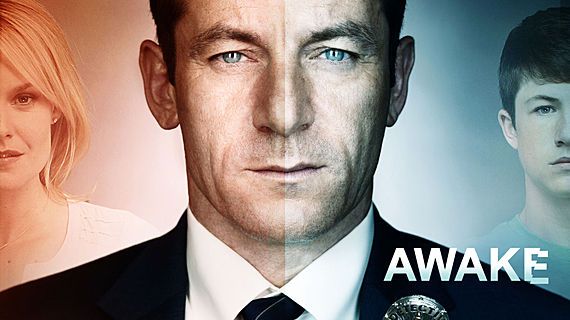
As far back as last summer, when pilots for the current television season were floating around, a quirky sci-fi show for NBC called Awake caught our eye as the best of the lot. Camouflaged in a standard procedural cop show is an ambitious neuroscience concept—a man living in two simultaneous dream worlds, either of which (or neither of which) could be real. We got a look at the first four episodes of the show, which lay a nice foundation for the many thought-provoking questions that will be addressed. We review them here, as well as answering some questions of our own about the sleep science behind the show with UCLA sleep expert Dr. Alon Avidan.
Detective Michael Britten (Jason Isaacs) is a middle class police officer living in Los Angeles, with a lovely wife and teenage son, a virtual ‘everyman’ until an unspeakable tragedy—in the show’s opening moments—transform him into a paranormal dual existence. A violent car accident kills at least one member of his family, possibly both (the audience doesn’t yet know, and neither does Britten). Except instead of mourning the loss and moving on, Britten begins a bifurcated dream existence, where in one state, his wife Hannah (Laura Allen) is alive and his son Rex (Dylan Minnette) has perished, and as soon as he wakes up, the opposite is true. Complicating matters further is the mirroring of his lives on each end of this sleep-wake spectrum state. In his ‘single father’ widower existence, he is partnered with gruff police veteran Isaiah Freeman (Steve Harris), and works with no-nonsense therapist Dr. Judith Evans (Cherry Jones). In his other existence, mourning
the loss of his son with his wife, Britten’s Captain (Laura Innes) has partnered him with rookie Efrem Vega (Wilmer Valderama), as he works things through with kind, objective therapist Dr. John Lee (BD Wong).
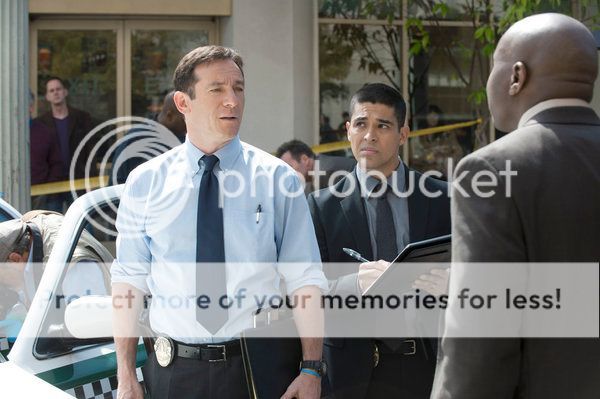
Juggling two worlds might seem complicated (and exhausting) enough, but life for Detective Britten gets even more muddled. Soon sliding with regularity between his two new worlds, he takes various clues from one to solve crimes in the other, even as his behavior in both becomes more erratic and precarious. And while the pilot flawlessly establishes the landscape of Britten’s new reality, future episodes will slowly chip away at it, leaving the viewers with many unanswered questions and mysteries. Is Britten simply dreaming one of these worlds? If so, which is his ‘true’ reality? Is either? Could they both be a lucid dream? Could it be that both his wife and son died? And while later episodes can sometimes veer a bit too much into standard procedural fare, they also offer a thunderbolt of a plot point, suggesting that the car crash that took Britten’s family may have been no accident at all. Given how quickly the last truly ambitious network sci-fi drama (Heroes) veered into absurdity, the steady pacing and erudite plot development of Awake is an almost welcome relief.
We look forward to dreaming for many episodes to come.
Catch up with what you may have missed with this extended trailer:
The sleep science behind the thought-provoking concept of Awake excited us a lot, but we wanted to get deeper answers to some of our most basic questions about the neuroscience of sleep, and just what it is that Michael Britten might be suffering from. To do so, ScriptPhD.com sat down with Dr. Alon Yosefian Avidan, the Director of the Sleep Disorders Laboratory at UCLA’s Department of Neurology.
ScriptPhD.com: Dr. Avidan, for people reading this that may not know very much at all about sleep science, can you give us a brief layperson’s overview of what the scientific consensus is on what sleep is for, exactly?
Alon Avidan: There is no answer. We don’t understand the central reason for why we need sleep. But we know one thing—we can’t do without it. There are about 13 theories that help explain why we sleep. The theories range from needing it to have better memory akin to letting your computer organize files in its sleep mode, so the brain is doing that same thing in your sleep; organizing thoughts, memories and allowing space for new ones to be formed. Another theory is that sleep has a rejuvenating function, essentially for repair, for better immune function. There are other theories that sleep is a hibernation period during which you don’t really need to eat or look for food and it’s a way for you to reserve your energy. This is probably, evolutionarily speaking, back when humans were foraging and needing to conserve energy. There are some theories that sleep is a way for us to synchronize our bodily functions with the Earth. There are really not that many things that we humans are capable of doing during the night, and this is a time for us to synchronize our biological rhythms with that of the Earth.
SPhD: So regardless of which of these theories is true, extreme sleep deprivation has really bad consequences.
AA: Absolutely. When exposed to extreme sleep deprivation, laboratory animals, rats in particular, don’t survive for more than two weeks. They begin to have skin changes, ulcers and they eventually die. In humans, we have situations where people don’t sleep enough. There is a very rare condition called fatal familial insomnia, a condition where patients lose the ability to sleep, and the patient rarely survives beyond a year, maybe six months. But we do know that there are very acute and very chronic consequences that we can observe very quickly [in sleep-deprived patients], including memory problems, planning, and problems with cognitive functions. The chronic issues include inability to regulate food intake, so people end up gaining weight, people end up at risk for diseases that include diabetes, heart disease. And we know that for patients who have primary sleep disorders such as sleep apnea, narcolepsy, insomnia or others, their life expectancy is lower compared to
patients in the same age group.
SPhD: Well, turning to some of the sleep issues in Awake, our main character, Michael Britten, vacillates between two different sleep states, both of which function as his reality, in order to cope with the loss of his wife, son or possibly both. How much do we in fact use our subconscious as a coping mechanism for the traumatic things that happen to us in our lives?
AA: That’s a very interesting point. We know that people who are depressed spend a lot of time in bed, they tend to spend a lot of time sleeping, but their quality of sleep is disrupted. And perhaps it is a coping mechanism for them not to deal with the true conflicts or trauma that are occurring in their lives. What’s very interesting is that in those patients, when they do sleep, sleep is very disrupted. The quality of sleep related to depression or anxiety is really bad. They have arousals, they have awakenings, the duration is short, and the quality of sleep is very light. They often wake up and feel as if they haven’t really slept.
SPhD: What about the dream aspect of sleep in this patient sub-population?
AA: Dreams are when healthy individuals reach the REM cycle (which you know is when we dream). You can have dreams in non-REM cycles as well. What’s interesting is that patients who have post-traumatic stress disorder or anxiety, their dreams are frightening. They’re usually nightmares. Studies show that in many patients who have a very profound trauma like 9/11 survivors in New York City, there was an epidemic of nightmares and stressful sleep experience. Dreams are not normal in patients who have psychiatric disorders, and they are more dramatic and more intense dreams.
SPhD: In the show, Mr. Britten takes clues from one sleep state to solve his crimes in another sleep state (either of which he considers a reality). One of his therapists warns him that doing this is incredibly dangerous because his “unconscious is unreliable.” What do you think the therapist meant by that?
AA: So what’s likely happening to him clinically is that he’s unable to distinguish between sleep and wakefulness. And what is being advised is be more careful not to rely on facts that may be occurring in dreams or wakefulness, because he is not aware which state this is arising from.
SPhD: Is there something to that piece of advice? What about people who regularly swear by premonitions or things they “see” in their dreams?
AA: Clinically, we really don’t see that very often. We don’t see patients relaying a sense of reality between sleep and wakefulness. There is a situation that is neither a sleep state, nor wakefulness, but a combination of the two—the patient has lost sense of what is real and what isn’t. Dissociative fugue disorder is a rare psychiatric disorder where the patient loses their sense of reality, their sense of identity. And it does have something to do with sleep because it’s one of those mixtures of sleep and wakefulness when the patient is unsure of whether they were asleep or awake. It involves extensive memory loss, usually into the wakefulness period, and the person just doesn’t have the capacity to determine what is real and what is fiction.
So, what you are describing with this police officer, he could have this sleep disorder (or something similar) rather than a primary sleep disorder. In the sleep literature, we don’t have patients who strictly come in and lose the perception of sleep and wakefulness and have no other psychiatric issues. What you’re describing is a patient who has a fugue, and may have dream episodes that are very profound, but his underlying primary pathology is a psychiatric one. And there is usually something that crosses this person into the fugue state, and the one thing that does it is usually a major life event that is very stressful. Or a condition in which the patient has such a severe depression that they have no sense of reality because they have a borderline personality and they forget what is real—their sense of reality is so profoundly sad and full of tragedy that they can’t accept it, and are thus creating this lucid state in which they exist more comfortably because they don’t need to deal with the tragedy in their lives.
We want to thank Dr. Avidan for taking time to chat with ScriptPhD.com and give his thoughts on some of the sleep science pertaining to Awake.
~*ScriptPhD*~
*****************
ScriptPhD.com covers science and technology in entertainment, media and advertising. Hire our consulting company for creative content development.
Subscribe to free email notifications of new posts on our home page.
]]>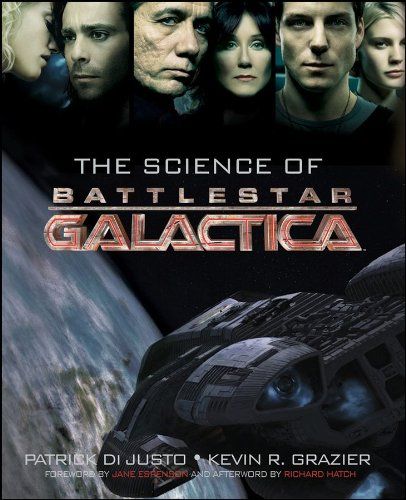
Battlestar Galactica is one of the defining, genre-changing science fiction shows of its, or perhaps any, time. The remake of the 1970s cult classic was sexy, sophisticated, and set a new standard for the science fiction shows and movies that will follow in its path. In addition to exploring staple concepts such as life, survival, politics and war, BSG reawakened its audience to science and its role in moral, ethical, and daily impact in our lives, especially given the technologically-driven era that we live in. “Writers were not allowed to jettison science for the sake of the story,” declares co-executive producer Jane Espenson in her foreword to the book. “Other than in specific instances of intentionally inexplicable phenomena, science was respected.” In an artful afterword, Richard Hatch (the original Apollo and Tom Zarek in the new series) concurs. “BSG used science not as a veneer, but as a key thematic component for driving many of the character stories… which is the art of science fiction.” The sustained use of complex, correct science as a plot element to the degree that was done in Battlestar Galactica is also a hallmark first. This is the topic of the new book The Science of Battlestar Galactica, newly released from Wiley Books, and written by Kevin R. Grazier, the very science advisor who consulted with the BSG writing staff on all things science, with a contribution from Wired writer Patrick DiJusto. Now, for the first time, everyone from casual fans to astrophysicists can gain insight into the research used to construct major stories and technology of the show—and learn some very cool science along the way. Our review of The Science of Battlestar Galactica (and our 100th blog post!) under the “continue reading” cut.
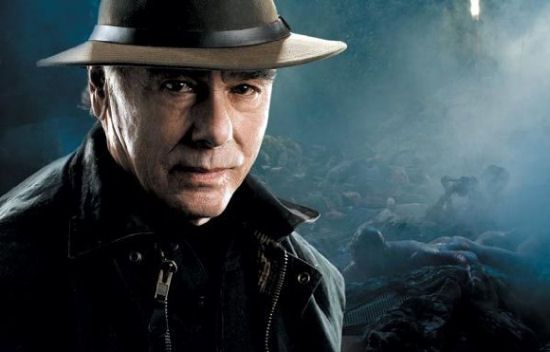
What is life? Seriously. I’m not asking one of those hypothetical existential questions that end up discussed ad nauseum in a dorm room at 3 AM. I’m asking the central question that Battlestar Galactica, and much of science fiction, is based around. The shortest section of The Science of Battlestar Galactica, “Life Began Out Here,” is its most poignant. No matter the conflict, subplot or theme explored on BSG, they ultimately reverted back to the idea of what constituted a living being, and what rights, if any, those beings possessed. It all boils down to cylons. What are they made of? How do their brains (potentially) work? How much information can they contain, and how is it processed from one dead cylon to its next incarnation? How could a cylon and a human mate successfully, and is their offspring (Hera Agathon) the Mitochondrial Eve of that society? How did they evolve? What is the biological difference between raiders, centurions, and humanoid cylons? Who can forget the ew gross factor of Boomer plugging her arm into the cylon computer system, but how could she do that, especially when she was made to act, feel and think as a human being? A brief, smart discussion on spontaneous evolution and basic biology gives way to a thoughtful evocation of our own efforts with artificial intelligence, and the responsibilities that it engenders. Take a look at the website of the MIT iGem Program, an annual competition to design biological systems that will operate in living cells from standard toolkits. Do some of their creations, including bacteria that eat industrial pollutants and treat lactose intolerance, constitute life, and are our own Cybernetic Life Nodes not too far away? The section ends in a fascinating debate over who we are more akin to—the humans of the Battlestar universe (as is widely assumed) or cylons. The answer would surprise you.
The middle of The Science of Battlestar Galactica, composed of “The Physics of Battlestar Galactica” and “The Twelve Colonies and The Rest of Space” reads largely like my college physics textbook, only with far cooler sample problems. If Apollo and Starbuck both launch their vipers at the same time and Starbuck coasts past Apollo, according to special relativity, who is moving? In perhaps the greatest implementation of Einstein’s famous theory in science fiction, special relativity explains how Starbuck could explain that she wasn’t a Cylon when she returned unharmed from the dead, and why her viper looked brand new. A special look at radiation particularly interested me, with a chemistry background, as it thoroughly delved into the chemistry and physics of radiation, heat-seeking missile weapons, DNA damage, and the power of nuclear weapons, both with fictional examples (the destruction of Caprica) and real (Japan and Chernobyl). The chapters on relativity (E=mc2) and the Lorentz Contraction reminded me of a seminar on dark energy that we covered at the Hollywood Laserium presented a year ago by Dr. Charles Baltay (NOT Baltar!), the man who was responsible for Pluto losing its planetary status. At the time, a lot of the concepts seemed a bit esoteric, but having read this book, are now elementary. Did you know, for example, that a supernova explosion is so powerful, it can briefly cause iron and other atoms remaining in the star to fuse into every naturally occurring element in the periodic table? Nifty, eh? Astronomy buffs, amateur and experienced, will enjoy the section on space, with a preamble on the formation of our galaxy and star systems to the 12 different planets of the Colonies, and how that many habitable planets could all be packed into such a dense area (see companion map below).

With perfect timing for the publication of The Science of BSG, Kevin R. Grazier and co-executive producer Jane Espenson have teamed up to create a plausible astronomy map of the 12 colonies of Battlestar Galactica. Find a larger, interactive version here.
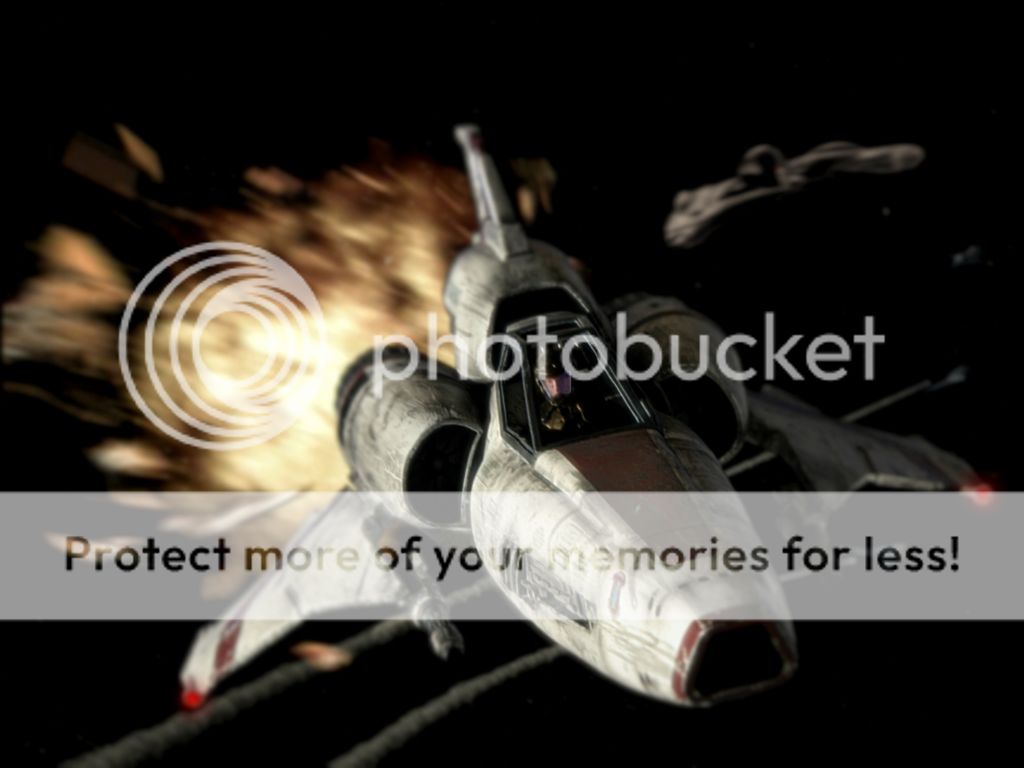
One of the more fun aspects to watching BSG was the cornucopia of weapons, toys, and other electronics used by both humans and Cylons, a subject explored in the most meaty section of the whole book, “Battlestar Tech.” This includes a discussion of propulsion and how the Galactica’s jump drive might work, artificial gravity, a great chapter on the vipers and raptors as effective weapons, and positing how it is that Six was able to infiltrate the colonial computer infrastructure… besides the obvious, that is. I really enjoyed learning about Faraday cages, tachyon particles, brane cosmology, and what a back door is in computer programming, terms you can bet I will be throwing out casually at my next hoity-toity dinner party. The next time you rewatch an episode, and hear Mr. Gaeta utter a directive such as “We have a Cylon raider, CBDR, bearing 123 carom 45,” not only will you know exactly what he’s saying relative to the cartesian coordinates of the BSG space universe, but how this information is used to operate the complicated three-dimensional space system that the pilots have to operate in. Finally, critics such as myself of the dilapidated corded phones used aboard the Galactica will be interested to find out why they may have actually been a good idea in protecting the fleet from Cylon detection.
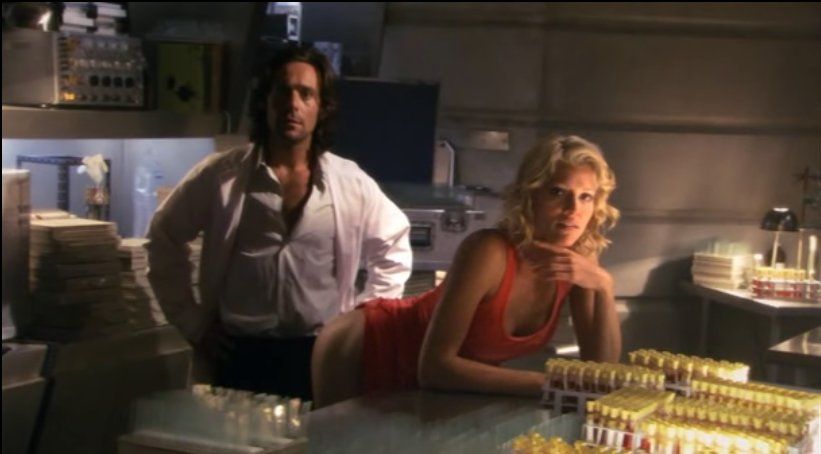
The ultimate selling point of this book is its ability to present material that will appeal to all fractions of a very diverse audience. The writing style is fluid, clever, informative and appropriately humorous in the way one would expect of a geeky sci-fi book (highlighted by a chapter on Cylon composition and detection thereof by Dr. Baltar written in dialogue format between an omniscient scientist and a smart-aleck fanboy). In fact, the co-authors merge their styles well enough so as to imagine that only one person wrote the book. Part textbook, part entertainment, part series companion, The Science of Battlestar Galactica is concomitantly smart, complicated, approachable and difficult—it does not surprise us one bit that in the couple of short months since its wide release, talk of numerous literary awards has already been circling. In between lessons on basic biology, astrophysics, energy and basic engineering are sprinkled delightful vignettes of actual on-set problem solving involving science. My favorites included plausible ways Cylons could download their information as they’re reborn (get ready for some serious computer-speak here!), an excellent explanation of Dr. Baltar’s mysterious Cylon detector, radiation and the difference between uninhabitable ‘dead Earth’ and barely habitable New Caprica, and the revelation by Dr. Grazier of how he had to—in a frantic period of 24 sleepless hours—construct a theory as to how the FTL drive works for an episode-specific reason. Much like the show it is based on, this book asks as many questions as it answers, most notably on social parables within our own world. Are we on our way to building Cylon artificial intelligence? Could our computer infrastructure ever get compromised like the ones on Caprica? Would we ever be able to travel to parallel universes, and what would be the implications of life forms besides our own? How might they even detect our presence?
Read our in-depth interview with Kevin R. Grazier here
Join our our Facebook fan page for a special giveaway commemorating the release of The Science of Battlestar Galactica and our 100th blog post. Now if you’ll excuse me, having read and absorbed this illuminating volume, I have been inspired to go and watch the entire series from start to finish all over again!
~*ScriptPhD*~
*****************
ScriptPhD.com covers science and technology in entertainment, media and advertising. Hire our consulting company for creative content development.
Subscribe to free email notifications of new posts on our home page.
]]>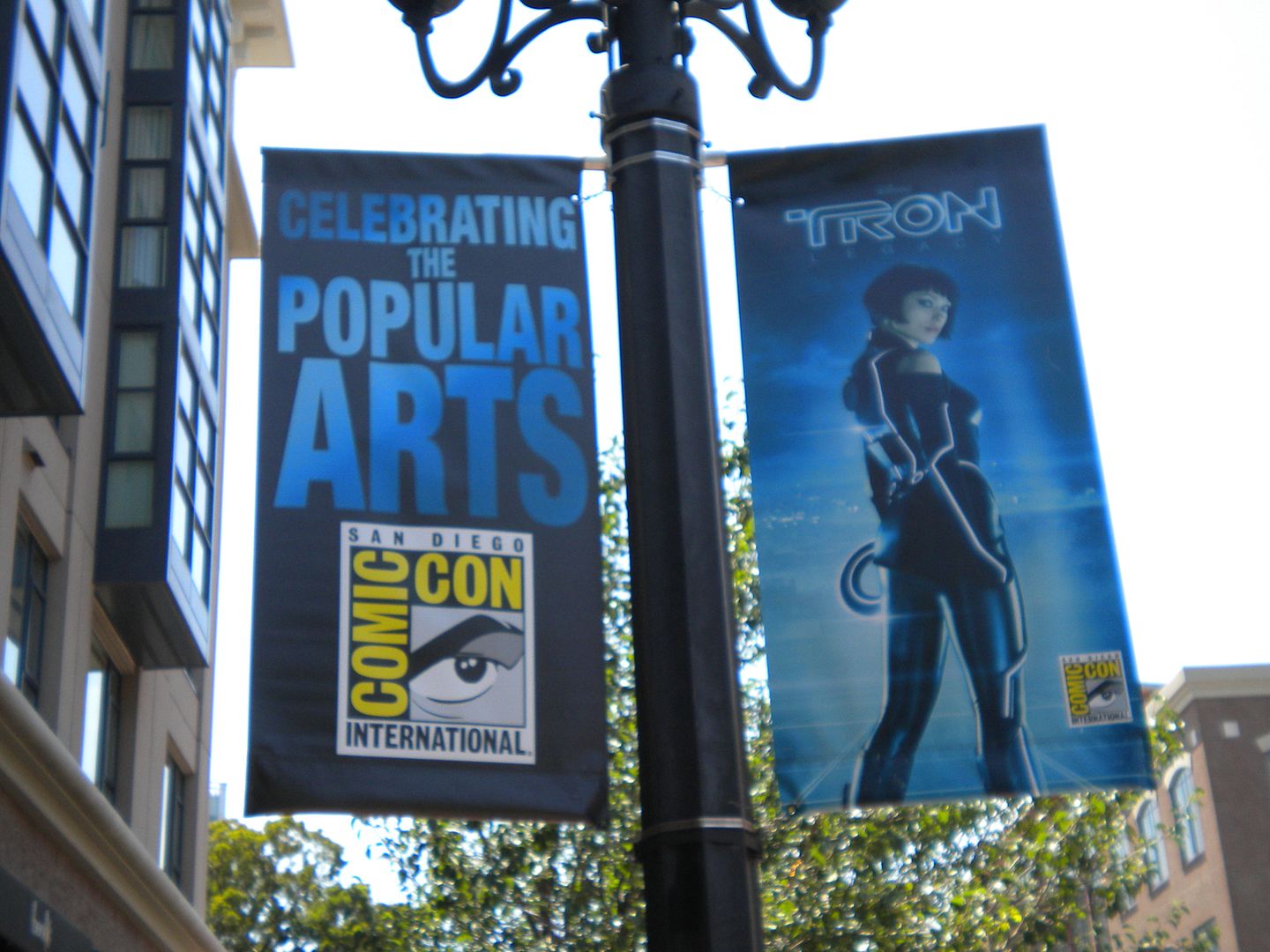
Day 3 was Star Wars Day at San Diego Comic-Con International and we have something shocking to report, ladies and gentlemen. We did not see a single light saber, not one! Since we almost incurred an unfortunate eye injury last year due to an overenthusiastic Jedi, this was most welcome relief. For ScriptPhD.com, today was all about science and technology. In a day that could not have been more tailor-made for our website, we enjoyed panels with the eminent sci-fi television writers of today discussing writing for genre TV (a must-read for any aspiring TV writers out there!), a visit from the greatest science fiction writer in the history of science fiction, Ray Bradbury, a preview of next season’s sci-fi show The Event, and a panel on how exactly shows like CSI “tech” out with gadgets galore. Oh, yes, did we mention we got to hang out privately with the MythBusters?? With the help of our intrepid reporter Bryy Miller, we bring you the most complete Comic-Con coverage on the web. Plus, our Costume of the Day, after the “continue reading” cut!
The Write Stuff: Creating Genre Television
LOST. CSI. V. Battlestar Galactica. It seems that sci-fi, tech, and geek-chic television is everywhere. Not only is it a staple of prime time (across basic and extended cable), it’s an increasingly popular genre for which good writers are constantly in demand. Since we are SCRIPTPhD.com, an opportunity to listen in as a panel of some of today’s hottest genre television writers gave away secrets of their craft and advice for aspiring writers was irresistible.

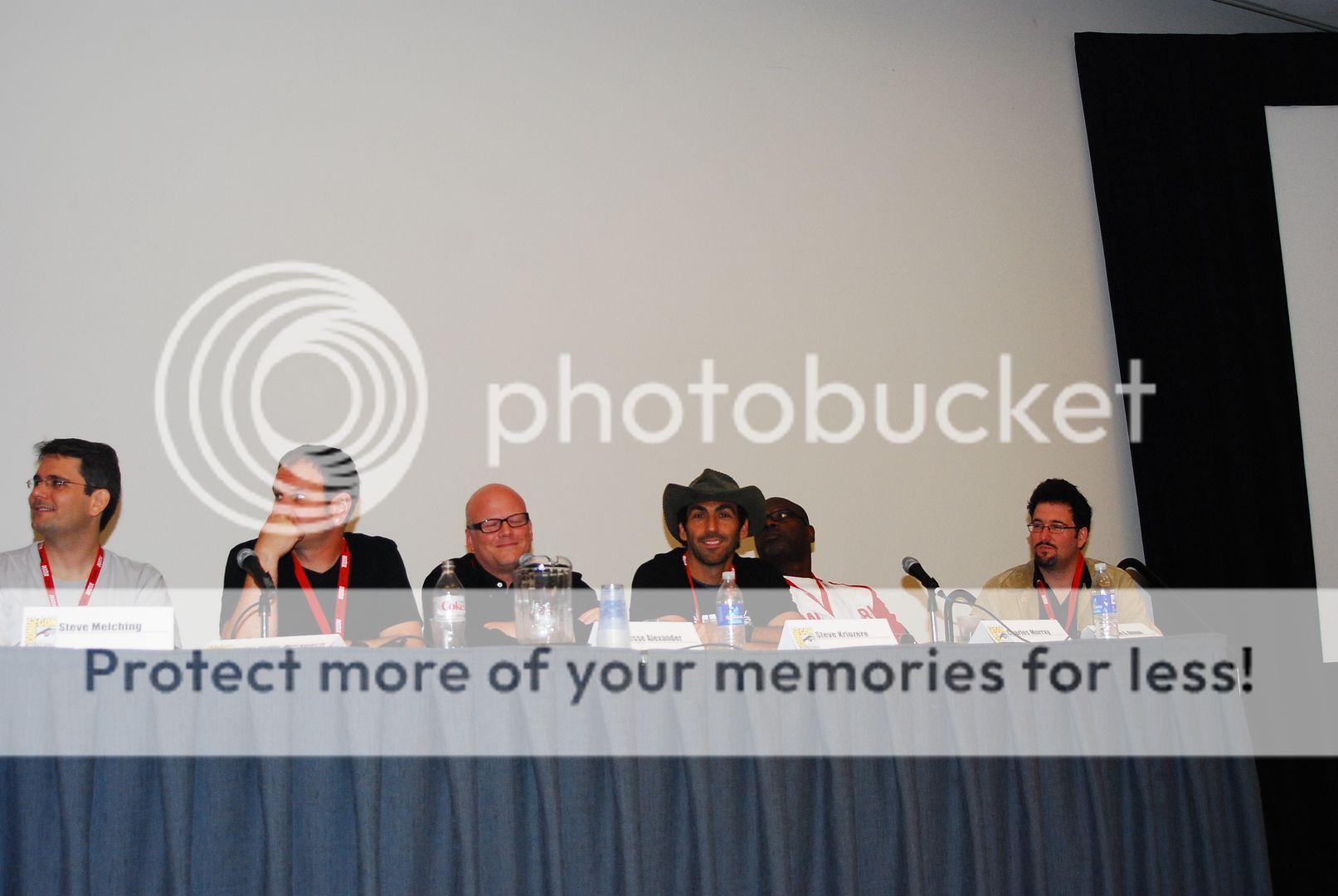
Since this panel consisted of so many writers, albeit a dream team thereof, there was only an allotted amount of time for three questions, each of which the panelists answered one by one down the line, and quite enthusiastically. The moderator, Jeff Goldsmith, who runs the industry rag Creative Screenwriting correctly pointed out that not only are they all working in TV, but if they weren’t on this panel, they’d be at Comic-Con anyway. He called them the “Algonquin geek table.” The first question was to ask each screenwriter what brilliant idea they had that would revolutionize a show they were working on at the time, but that couldn’t get past the network censors.
Mark Altman (Castle, Elvis Van Helsing) recalled creating a pilot called Elvis Van Helsing, but ABC went with The Middle Man instead. So he turned it into a graphic novel, and the rest was history. Charles Murray (V, Criminal Minds) actually recalled a terrific idea for an episode of Criminal Minds, where a serial killer would put a milk carton in someone’s fridge and the “Have You Seen This Person?” picture would be of the dead person. Clever, we thought! Steve Kriozere (NCIS, VIP) had the clever idea on VIP of casting Bruce Campbell to play Pamela Anderson’s uncle. The amazing and talented Jesse Alexander (Alias, LOST, Heroes) recalled a victory for geeks in the form of Heroes Season 1 in an episode entitled Days of Future Past where all the characters went into alternate future. He mentioned that it was so hard to approve and get on air, but the episode went on to win multiple awards. What didn’t make it? “Season 5.”
Steve Melching (Clone Wars, Transformers, The Batman) recalled writing for the animated series The Batman taking place in his first few years in Gotham City, and wanted (but failed) to approve a B story about a frat boy group dressing up in D-List costumes, committing fake crimes and then videotaping their subsequent ass kicking by Batman. We wonder why that didn’t get approved. Ashley E. Miller (Fringe, Terminator) wanted a Fringe follow up to the episode “Bishop Revival,” which had an immortal Nazi. He wanted a flashback episode to 1942, where we find out that Agent Phillip Broyles is 100 years old, and whacking Nazis. Jose Molina (Castle, Firefly) wanted a Firefly payoff episode with a 9-months-pregnant woman being evil, where the team kills her but they save the baby, and the episode would consist of three acts of “Three Men and a Baby.” Right. Sarah Watson (Middleman, Parenthood) recalled being hired to do a SyFy Channel movie of the week about an untapped volcano under Manhattan (seriously!), and she had grand plans for lava engulfing Statue of Liberty, taking over all of Manhattan island, but when the movie got produced the visual ended up being lava trickling out from under a garage. Robert Hewitt Wolfe (The Gates, Deep Space Nine) was writing for 4400 in its final season, and was obsessed with the idea of creating an aerosol promycin bomb over Seattle (hmmm, as a Seattleite, I booed this from the audience). The showrunners created a promycin bomb at the end. So the next time you think all TV writers are geniuses, just remember that for every great episode of your favorite show, there were many bad ideas tossed around in the writers’ room.
Next, Goldsmith asked the panel to recount (as diplomatically as possible) the stupidest network notes they’d ever encountered for a show script they worked on.
Mark Altman recalled working on a SyFy Channel movie where executives asked him to recap the whole plot at the beginning of the hour because of people tuning in from HBO. Charles Murray, while working on V, was told he couldn’t use the word lizard in an episode. How do you get past something like that, he was asked. “I left the show. That’s how you get past it.” Steve Kriozere revealed the #1 SyFy Channel rule of movies: don’t speak to the monster. Jesse Alexander, having worked on some of the greatest sci-fi hits ever, waxed more philosophical. Everyone has an opinion on these shows, but executives want the rules of the show’s world, they want everything spelled out clearly, a lot of exposition. They’re generally happier if the shows are procedurals, but sci-fi shows don’t have room for that—if all the secrets and exposition are revealed it drives people away from the content. Steve Melching pointed out that a lot of animated shows have hyper-sensors because they’re aimed at children. The dumbest note he ever received was that you can’t say “killer satellites.” Ashley E. Miller was reminded (we are shocked!) that you cannot have an 11 year old boy say douchenozzle on prime time TV. Jose Molina recalled an episode of Castle where a body is found in the teaser, the guys go through case, and find out that the victim was killed by a stiletto. Said the executives: “Does the killer have to kill with a shoe?” Sarah Watson revealed that the most annoying thing to writers on shows now is that they’re paid by sponsors, so writers have to put products into scenes strategically. Her worst example was an episode of a show with a surf competition…sponsored by Tampax. To make this work, they had to cover a poor actress’s entire surf bodysuit with Tampax logos. Robert Hewitt Wolfe was taken out to dinner by the main executives of a show he was working on and flat out asked to dumb down the series. Ahhh, the things you learn when the iron curtain goes down.
Finally, Goldsmith asked the panel to give advice to young TV writers (or aspiring writers) on how to best write for a budget, which is unfortunately what most young writers will face on television these days.
Without question, the panel answered unanimously that the secret in the writing is all. about. character. The best and cheapest special effects are two actors in a room with terrific conflict and terrific dialogue—that’s what’s compelling, that’s what’s intimate. Most physical action, they reminded us, is actually superfluous—only revert to it after all possible dialogue is tapped out. Ultimately, you must look at how what you cut (if you are forced to cut things) affects the character. If you put six people in a scene, make sure that all of them need to be in the scene, because it is extremely expensive to shoot. The writers lamented that networks sometimes have too much money, and a subsequent desire to compete with Transformers or Iron Man, which television can’t do. Writers must remember that character works for television, and you can have high-concept ideas for sci-fi. That’s why shows on cable, which are often budget-restricted, are so great. Sarah Watson reminded the audience that you can always make a show cheaper, and fantastic, with great writing and great dialogue. This is how Friday Night Lights, which shoots on a shoestring budget down in Texas, was able to survive for five seasons.
Mostly, in advice relevant to any writer reading this, they said not to repeat past mistakes.
The Event

This television show, premiering in the fall of 2010, might be the new LOST, or it might be the new FlashForward. I’m not sure yet. The Event, a show that is so steeped in mystery that even its title is nothing more than Something Happens, was a show—and will be a show—with as many problems as it has concepts. Fortunately, all of its flaws are structural.
The pilot is laid out as three separate stories (well, actually, four, but one is extremely short in comparison) over the course of three separate acts. We actually start the show in the middle of the story when our hero, Sean Walker (Jason Ritter), hijacks a plane in order to save it, and then flash back to eight days earlier, and then forward to seven days earlier, and then once more to the present. It gets even more confusing when President Eli Martinez (the incredibly suave Blair Underwood) gets his go at the story, and then his segment goes back an entire year. The other two stories comprise of the father of Sean’s girlfriend, whose house and family are assaulted by unknown forces, and Simon Lee (Ian Anthony Dale), the supposed second-in-command of a secret government base/prison that lies at the center of The Event. It’s a shame that Lee’s section is so short, as Dale is a fantastic actor even within the confines of such little material. But perhaps the best acting comes from ER/West Wing (and Northwestern University!) alumna, Laura Innes, who absolutely nails her cryptic sayings as Sofia, the leader of the base/prison/thing-to-be-revealed-later.
The show will need to cut out some of the flashes in order to survive past its initial thirteen episodes, but it is definitely a unique format that works for this type of story. The writing was high-quality and so was the dialogue; there were no qualms there. It also revealed quite a bit about the world that had been set up if you looked closely enough. Co-Producer Evan Katz made the promise that answers would actually come a lot faster than with other mystery longforms. This is welcome, especially since I am of the belief that mystery shows can maintain the mystery if they answer questions in the right or clever way. Sometimes, it is even essential to answer them if you want the show to progress to its next level of weirdness. Blair Underwood was then asked what it is like to be the first Cuban president, to which he replied that there would be no Salsa dancing.
Katz then ended the panel the only way it could have possibly ended:
“The Salsa is not The Event.”
Spotlight On: Ray Bradbury
He is brilliant. He is one of the foremost technology predictors since Leonardo DaVinci. He is irreverent, utterly aware of his importance, and quite simply, the greatest science fiction writer in the history of the genre. He none other than Ray Bradbury. Ray has been coming to Comic-Con since the very first year of its inception. A devoted comics and graphic novel buff, he loves interacting yearly with fans, and gracing them with his musings, knowledge and appreciation. We were honored and somewhat overwhelmed to be there in person for Ray’s 41st Comic-Con panel, on the heels of his 90th birthday. Because Bradbury’s words speak for themselves, we bring you the panel through his eyes.
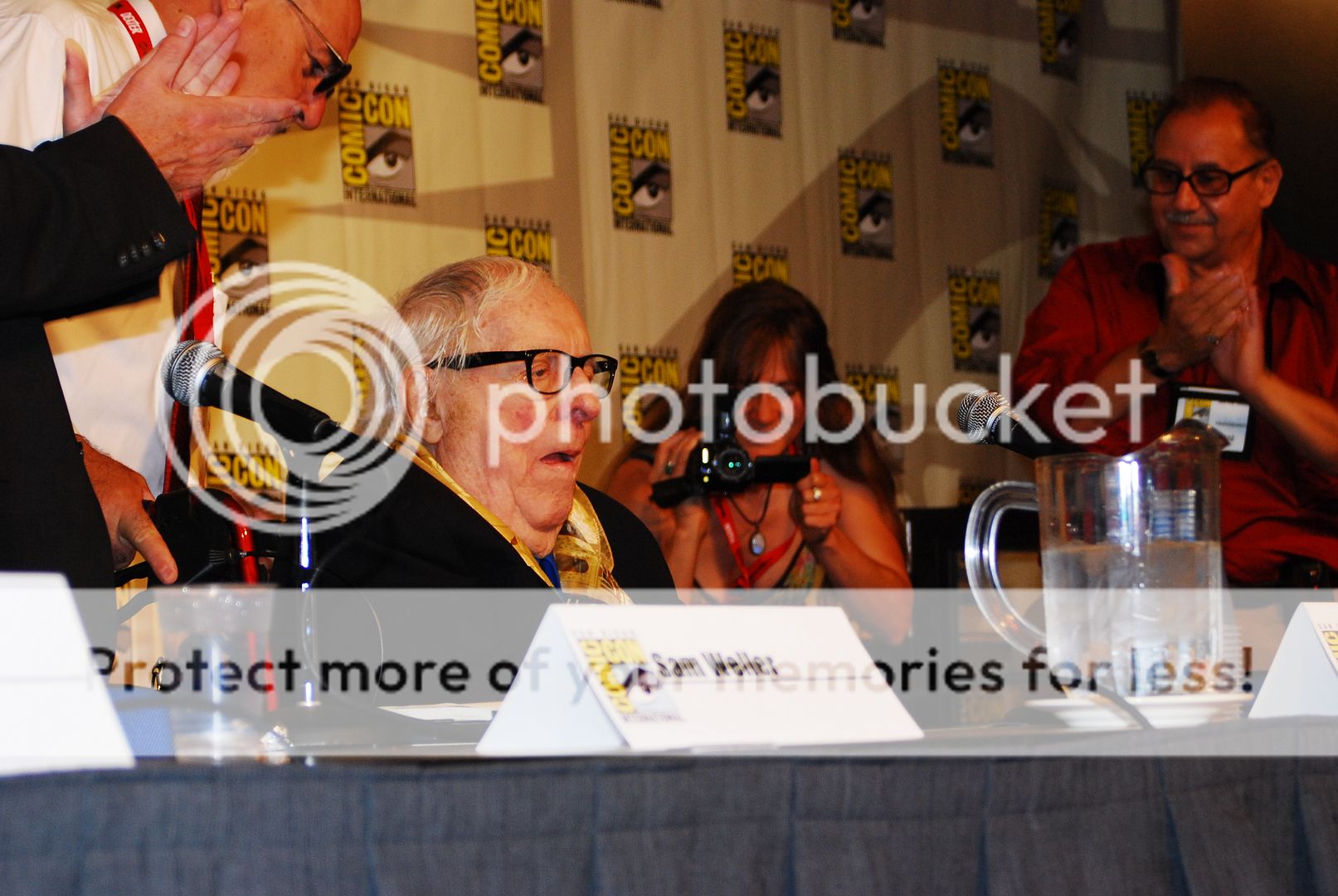
Bradbury, not shy about quips and bold statements, starts out his panel with a bang: “I want to make an announcement. Sam Weller and I are working on a new book together: Let’s Let The Cat out of the Bag.” In actuality, Weller and Bradbury released a brand new book of interviews (out June 29th) entitled Listen to the Echoes: The Ray Bradbury Interviews. Weller has spent over a decade with Bradbury, getting to know him, studying his works, and acted as his guide during the panel (Mr. Bradbury has become a bit hard of hearing). Bradbury is currently working on a new book of 20 short stories entitled “Juggernaut” to be published next Christmas.

On how it feels to be Ray Bradbury and if he ever marvels at himself, after a long, thoughtful pause, a hearty laugh and: “It feels mighty damn good.”
Fahrenheit 451 was among the most prescient sci-fi works of all time, predicting technology such as earbuds, flat screen televisions, school violence, and the rise of graphic novels. How did Bradbury predict all this stuff?
“The secret of life is being in love. By being in love, you predict yourself. Whatever you want is what you get. You don’t think about things; just do them. Don’t predict them—just make them.”
Of the technologies Bradbury predicted, he also warned about many, including rise of mass media. What tech would he like to see next?
Again, a thoughtful pause. “I’d like certain technologies to disappear. The internet is a great, big, stupid goddamn bore.” Keep in mind that when Bradbury was approached by an internet magnate to publish his works as e-books for the internet, he responded with: “Prick up your ears and go to hell!” The internet magnate? None other than the CEO of Yahoo.
Another strong, recurring theme of Bradbury’s panel was his love (adoration, really) of space exploration, most notably colonization of Mars and the Moon. Why? “Because we’re going to live forever. We should go back and build a base on the Moon, put a civilization on Mars. 500 years from now, we’ll go out into the Universe, and when we do that, we have a chance to live forever.”
Weller tried to get Bradbury to discuss the new book, once again evoking his crotchety sense of humour: “You can’t afford it. So get out of here and forget it.” In an extremely revealing, intimate moment, Weller pointed out that many Mars stories and works are inspired by and cut from Bradbury’s Martian Chronicles, none more similar than the Twilight Zone. Bradbury then revealed something that many of his fans probably don’t know. “Rod Sterling came to my house many years ago. He didn’t know anything about writing sci-fi. So I took him down to my basement and gave him copies of books written by Roald Dahl, John Collier, a number of other great sci-fi authors, and myself. Rod Sterling forgot that he read all these books, and when he wrote his programs, he copied some of his ideas from me, and we got into a big argument.” The two never reconciled.
As we’ve mentioned, Bradbury came to Comic-Con in its first year, where he said only 300 people came to first meeting, quite different from today, where 1,000 people were gathered in his room alone. Why does he come so often? “Because I’ve been collecting comic strips all my life. I have 30 years’ of Prince Valiant Sunday illustrations put away, all of Buck Rogers. My background in becoming a writer was falling in love with comic strips.” How did they influence his prose and narrative? “Comic strips are full of imagination and glorious adventures. My all-time favorite is Mutts. A year from now, there will be a graphic novel of “The Martian Chronicles” and “Something Wicked This Way Comes.”” Bradbury is, in fact, the world’s greatest (and possibly oldest) fanboy. He is famous for writing fan letters to writers and other figures that he admires. He sent books to John Huston, the famous screenwriter and filmmaker. He sent a hand-written letter to Edgar Rice Burroughs begging him to come to a meeting of Bradbury’s science fiction society club.
Another thing fans may not know is that Bradbury is considered the patron saint of the American library system. He has been very active in rescuing libraries that are under fire because of budgetary crises. He recounted the story of his love affair with the library. “When I left high school, I had no money to go to college. I decided to not worry about going to college. I thought: “I will educate myself.” So I walked down the street, I walked into a library for 3 days a week for 10 years. Most of you in the audience can’t afford to go to college. But if you want to educate yourself, you can afford to go to the library. When I was 28 years old, I graduated from the library.”
The concept of time travel is explored in the short story “A Sound of Thunder.” If Bradbury could time travel, he was asked to what moment it would be? “Every. Single. Moment. Every single moment of my life has been incredible. I’ve savored it. It’s beautiful, because I’ve remained a boy. The man you see here tonight is a 12 year old boy, and he’s having fun!” How does he stay connected to his inner child? “Don’t worry about the future, or the past, you just explode every day. If you’re dynamic, you don’t have to worry about what age you are.”
Indeed, childhood is a theme of many of his short stories. Why is this so important to Bradbury? “Because I grew up loving carnivals and circuses. That’s why I wrote those stories.”
When asked if he had any regrets in life, Bradbury evoked the biggest laugh of the day: “I regret that I didn’t have more time with Bo Derek.” What’s the Bo Derek story? She came up to him in Paris train station, and exclaimed “Mr. Bradbury, I love you!” To which he responded, “Who are you?” She replied, “My name is Bo Derek. Mr. Bradbury, will you travel on the train with me?” With a stoic face he recalled replying: “Yep, I will!” The rest was censored.
Other than Be Derek, what was his greatest love? Bradbury turned philosophical. “I am the world’s greatest lover. I love to write short stories. I write them. I love to write novels. I write them. I love to write poetry. I write it. I love to paint pictures. I paint them. I loved directing a film. So I directed it. Those are my greatest lovers. I have loved all these things I have told you about.”
What authors inspired Bradbury growing up? “Edgar Rice Burrows. And Edgar Allan Poe—scared the hell out of me.”
Another fact about Bradbury that many people may not know is his rather illuminating and successful career as a designer and architect. He was asked how he got involved with designing the San Diego city center Horton Plaza. ”I designed a lot of other places all over LA. 50 years ago, the people who were building the New World’s Fair asked me to redesign the United States Pavilion. I helped build Epcot down in Florida. Because of those works, the people of San Diego came and asked for input in building The Horton Plaza at the center of San Diego.”
Aldous Huxley famously said of Bradbury, “You know what you are sir? You are a poet.” When asked who the poets are that have influenced his writing, Bradbury immediately responded: “Shakespeare and Alexander Pope.”
What are the things that keep Bradbury motivated now? “I have more work to do.”
On how his writing has changed over time: “It’s gotten more brilliant.”
As such a fan of Mars, Bradbury was asked how he feels about the ongoing Martian probes, and the real science evidence they have brought back to Earth. “I’m glad we are doing that [research], but we should be doing more. We should be going there in person. Not with a lander, but with a real rocket ship and landing on Mars.” In a rather endearing moment, Weller revealed that Bradbury has never driven an automobile. But he was invited to the Jet Propulsion Laboratory in Pasadena, where scientists asked him if he’d like to drive the Mars Rover over Mars. So he hasn’t driven on the 405 freeway, but he has driven across Mars! The scientists even gave him a Martian drivers license.
Any futuristic technologies for cities that Bradbury would like to see? “Monorails all over LA and California. Get rid of the goddamn freeways!” As a Los Angeles resident, hear, hear, Mr. Bradbury!
What was the intended audience of Fahrenheit 451 and how does he feel about its rise to prominence as a true modern American classic? “I am not a science fiction writer. All my books are fantasy. But the one book that is pure science fiction is Fahrenheit 451. So I’m glad that I wrote it. I’m glad that you all feel that way about it too.”
Does Bradbury have a favorite work? “All of my books are my favorites. All of my books are my children. I love all my children.”
How does Bradbury feel about digital books? With a cranky grunt: “I’ve already told you that. I don’t like them. I think of iPads and Kindles as books with a computer screen. Real books smell, real books have memories.” We here at ScriptPhD.com would like to give that statement a heartfelt “AMEN!”
Finally, Bradbury, on turning 90 in a few weeks. How does it feel? “It’s been 90 goddamned incredible years!” To which the audience responded by singing him “Happy Birthday.” A surreal, incredible and special moment.
Teching Out on TV

This panel started out with an inundating montage of clips from tech-chic procedurals CSI and NCIS that involved technology of all sorts. It was part awesome and part utterly corny, as words to the song that was spliced in occasionally would find themselves on to the screen. I was afraid that this foreshadowed the panel being just a huge PR stroke for both shows, but I was later proven wrong. Despite the moderator speaking in a loud, fast, incoherent style of mumbling, the rest of the speakers (Anthony Zuicker, creator of CSI; Pauley Perette, CSI; Barrett Foa, NCIS: Los Angeles; Kirsten Vangsness, Criminal Minds; and Rich Catalani, producer of CSI) were very articulate about all aspects of technology on their shows. They strove to make it less a panel about technology on CSI and NCIS and more about technology and how it relates to CSI and NCIS.
The presentation started out with questions about how everyone got involved in their work, and more specifically, how they got involved in technology, or if they even were. Perette studied forensics in college, talking about how, back in her early years, nobody knew a thing about it. She related a story that the first time that her computer was hacked into, she tried to tell the police, but ended up having to explain to them what an IP Address was. Then, after shows such as CSI and Law & Order made technology and forensics mainstream, everyone was a part of a club that they felt they cultivated. “We all became semi-experts,” she said. “It’s been an incredible decade of change. What we’re showing on our show is the grand upmovement”. Vangsness was a tad in the opposite direction: she took teaching jobs in order to support herself, and one of those jobs was teaching PowerPoint to third graders. She now has images of third graders hacking into government installations to post spam of kittens.
Foa stopped the discussion at one point to explain to the audience that his show, unlike the original CSI, does not stare at a green screen when looking at his computer tomfoolery. It is all real. Which complicated matters greatly when Perette’s character met Foa’s in a crossover between their two shows. She had to literally teach him on set how to react to a green screen as oppose to a real image. Foa also related how the super-tech that we often think of as fictional and made up is actually real. The CSI writers have access to China Lake, a military outpost where they test experimental technology. Scary, huh?
But sometimes technology cannot save you, and honest-to-God legwork must be put into use. For one CSI episode involving a stampede of ants, they actually had to hire an Ant Wrangler and clean up all the creepy crawlies using a vacuum. CGI was expected to just look too ridiculous. Then, in a devilish sort of irony, the projector broke, so the panel was cut short and went straight to questions. Perette was met with a young woman who was going to major in Cellular Biology in college because of Perette’s performance on CSI.
Thus, the cycle continues.
MythBusters: Panel + Press Room Coverage
How popular are Discovery Channel’s MythBusters? Very. Each year, the group of geeky demolition rock stars, who prove and disprove popular science myths through the scientific method, represent one of the fan favorite panels at Comic-Con. This year was no different. Press pass notwithstanding, we barely squeezed into a sardine-tight hall full of science fans awaiting their heroes’ arrival. Take a look at the picture below:

As if the presence of television’s most explosive group wasn’t enough, the audience was tantalized two-fold before the panel. First, a montage video introducing the Busters had us cracking up with its over-the-top… what else?… explosions!

Then, a special guest, Geoff The Robot from The Late Show with Craig Ferguson, stepped out to proclaim his nerdy love of all things MythBusters.

Finally, to ear-deafening applause, Chris Hardwick of one of our favorite blogs The Nerdist (follow him on Twitter) introduced the MythBusters, who announced that they’ve signed up for 7 more years of glorious science. This is a very special Comic-Con for them. It’s the first time all five have come as a group, and it is gorgeous geek diva Kari Byron’s first Con.
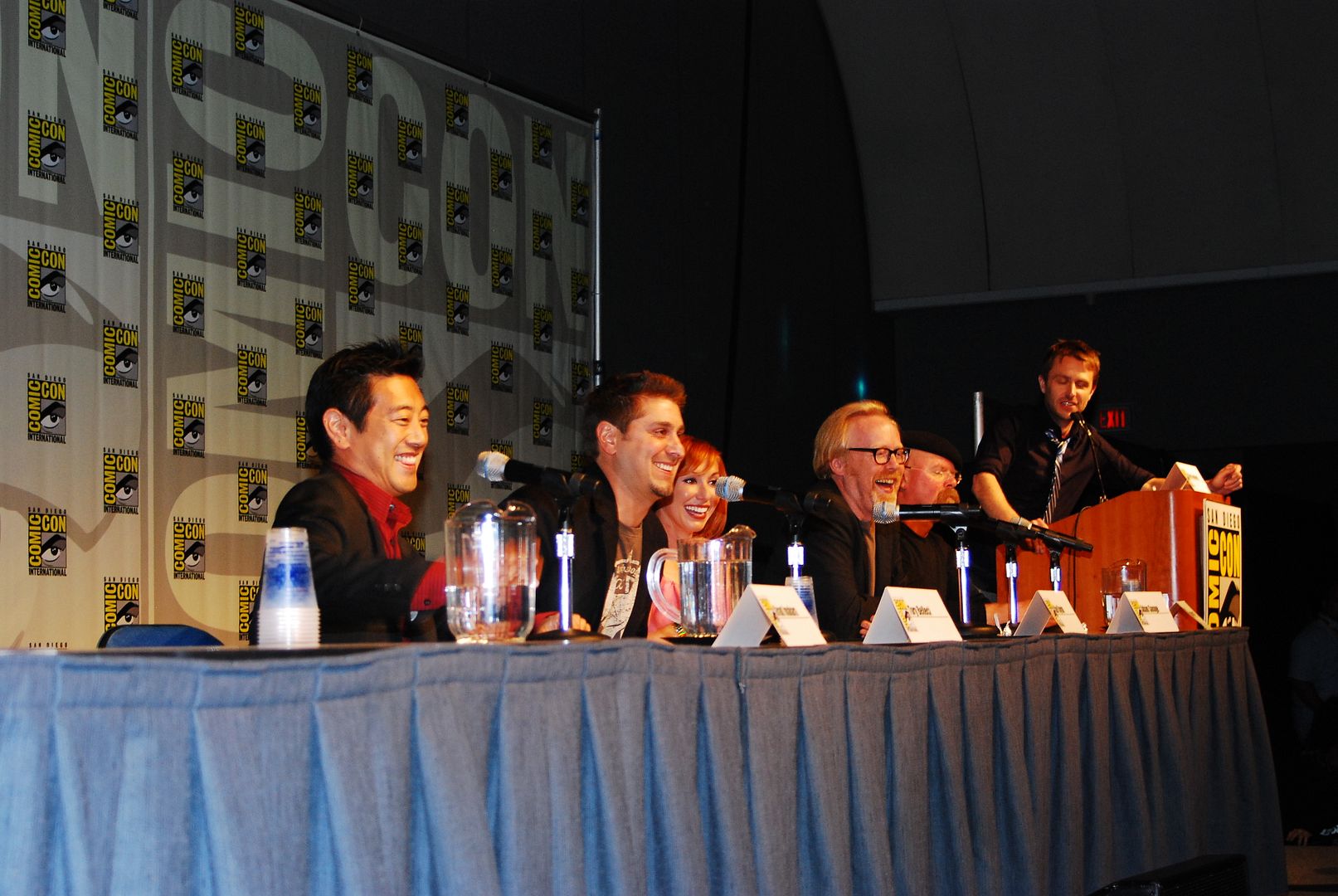
The first thing the MythBusters wanted their fans to know is just how very real they are. Although they feel like royalty at the Con, when they go back home to San Francisco, MythBusters is far from glamorous. Inside their workshop, which is a workshop and not a studio, they are doing all of the stunts and building themselves. They get dirty, they get bruised, and they do all of the experimenting. Says Adam Savage: “If you see it, we built it.” Although Savage has started getting more involved behind-the-scenes, he explained that the team is so knowledgeable about how to build things, that it’s faster and more efficient for them to do the building than to leave it to someone else. Tory Bellici mused that it would be nice to have stunt doubles sometimes, to which Kari Byron quipped: “They’re not stunts when you fall off.” Did we mention that we love Kari? Jamie Hyneman, who initially signed up for MythBusters because of the allure of getting to try new things, is still having a hard time acknowledging being on TV. When asked what famous people he’d met because of MythBusters, he couldn’t recall one. “President Obama?” nudged Byron. “Oh. Yeah,” replied Hyneman hysterically. Not so for Grant Imahara, possibly the most famous robotics guy in the world. “Craig Ferguson called me the Keith Richards of robotics,” said Grant. “I’m not sure how to take that.”
The audience was treated to a highlight reel of the upcoming season, which promises to have the best, and most extreme, experiments yet. The team revealed some of the secrets. Adam Savage revealed that a scene of a Porsche flipping backwards violently was done to bust an old 1980s myth that classic sports cars are more aerodynamic going backwards than forwards. In an utterly bad-ass bit of reconstruction, the body of a Porsche chassis was cut off, flipped backwards on the car, then raced at 100 miles per hour. Any more questions, kids? A scene showing Kari puking violently (she joked that it was in her contract to have to throw up every year) was explained as an episode testing whether people really do get cold feet when they have to do something scary. For the team, scary meant picking, then eating, two of the most disgusting selections from a table of delicacies consisting of spiders, cockroaches, chicken feet and more. And where does the team get their constant supply of ideas? “Surfing the internet really works!” joked Grant Imahara.
As to whether the team is cognizant of how much they advance science and critical thinking, and actively try to build experiments around didactic aims, the answer is… NO! Jamie remarked that as a whole, the MythBusters are a remarkably curious group. They are curious about stuff, they try to figure it out, and do so in a methodical and logical way. But they never set out to do science. Which, honestly, in the opinion of this website, is why their science is so great.
At this point, the team shared fun and hilarious inside stories from their Comic-Con experience and tidbits from back home in San Francisco. Adam recalls being shocked at two geeks that came up to him at an autograph table with their baby, wearing a onesie that said “Proof that nerds have sex.” Despite his uncomfortable laughter, the duo then asked him to sign their baby! Another fan went up to Jamie and remarked: “I’ve been watching your shows since I was a little girl and now I’m a PhD!” We’re pretty sure Jamie was kidding, but Adam still poked fun back at him. “You’re old!”
Just in time for next week’s Discovery Channel Shark Week, Adam recalled a fan coming up to him a few months back with what the fan was convinced was a brilliant suggestion: “Dude, you know what you should totally do? You should totally prove that, like, punching sharks will make them go away! Seriously, dude, it would be awesome! You’d just punch them.” A brief pause from Adam. “8 months later, there we were, knee deep in sharks, punching them in the face…”
Kari revealed that she filmed the show up to her 10th month of pregnancy. She pointed out that it’s a myth that pregnancy only lasts 9 months. (BUSTED!) She was worried that her baby would never come out. Replied Grant: “With all those explosions and gunshots outside, I wouldn’t come out either!”
Finally, to a fan that asked whether the team is ever scared of an experiment as too dangerous, Jamie reminded him that danger is a relative term. Nothing the MythBusters do is any less dangerous than driving down a freeway at 70 miles an hour. The trick is to good engineering and survive by doing a good job.
The new season of MythBusters premieres in the fall. Find coverage of their Comic-Con panel and clips from the new season on the MythBusters website.

We got to spend even more time hanging out with the MythBusters (and Geoff) backstage in the press area to get even more scoop about the show. We all wondered about the research process that the team undergoes. First and foremost, Adam proclaimed that they “don’t ever get things tested because they’re too dangerous.” There’s nothing the team is afraid of, and no length of time is too long to wait for a payoff. The research can take anywhere from 2 weeks to 2 years. The team searched 19 months for a lead layer thin enough to do an experiment properly. By contrast, the poppy seed drug testing experiment took two hours. They ate poppy seed muffins at 9 AM, and tested positive for heroin at 11 AM (well into the next day).
When asked about their terrific rapport, the team reiterated that they very much enjoy each other’s company and socialize quite well. All of the process, from picking to carrying out experiments, is totally collaborative. Secondly, the team shares a bond because they know each other quite well. “It’s not like we’re a science show boy band,” joked Adam. Most of them have known each other and worked together well before MythBusters began. Unlike other shows, MythBusters goes on for most of the year (46-47 weeks) because the building portions of the segments are so time-consuming. The most important thing to Jamie is a strong sense of respect that trickles down all the way to the show’s loyal crew of 23 people.
For the future of the show, Jamie revealed an interest in looking at the dichotomy of destructive things that do good work as well, steam being high on his list. The team never gets inspiration from movie trailers or clips if there’s no story there and they’re not worthy of a myth.
Adam revealed the interesting fact that somebody actually bought the Corvette which had been fouled by a decomposing pig to prove that a decomposing body can destroy the inside of the car. Adam now associates the smell of cleaner with that episode, which makes him sick to this day. Was that the team’s least favorite experiment, wondered ScriptPhD.com? Grant picked the ear wax candle experiment, jokingly calling it the “seasickness experiment.” Tory picked the chili pepper cure experiment. (“Burns on the way in, burns on the way out!”), while Kari picked the water torture episode. The most destructive experiment to this day, much to the chagrin of OSHA and safety regulation organizations of San Francisco, was the Civil War rocket, tested with a wax core. The team thought they had a proper bunker in the shop, but unfortunately ended up setting fire to their ceiling!
On any potential Discovery Channel crossover shows, Adam revealed that he’d like to go out into the wild with Bear Grylls (and so would I!) while Kari revealed that she would not like to do a dirty job.
And for the highlight of my personal day…

Last, but not least, is our official Day 3 Costume of the Day. We chose this warrior for a simple reason. He braved the chilly convention center without a shirt, yet with a completely covered head. Now if that isn’t upside-down thinking, we don’t know what is!

Incidentally, you can find much more photographic coverage of Comic-Con on our Facebook fan page. Become a fan, because this week, we will be announcing Comic-Con swag giveaways that only Facebook fans are eligible for.
~*ScriptPhD*~
*****************
ScriptPhD.com covers science and technology in entertainment, media and advertising. Hire our consulting company for creative content development.
Subscribe to free email notifications of new posts on our home page.
]]>
Nothing has done more to reinvigorate discussions about energy and fuel dependence than the tragic oil spill currently afflicting the Gulf Coast [excellent resource for trajectory, timeline and news sources]. Though scientists and oil manufacturers continue to debate the validity of the “Peak Oil” theory, a very uncomfortable reality looms that oil production may not be able to keep up with thirsty demand. With an ever-increasing global population, a constant proliferation of technology choices and lifestyle improvements, and a rising middle class in third world countries, the factors contributing to fuel consumption may be the precipice of an eventual geopolitical crisis. In an effort to showcase their dedication to addressing the most salient energy and environmental questions affecting our generation, the Discovery Channel, backed by founder John Hendricks, is launching a revolutionary four-part documentary called Powering The Future. In it, they address a range of economics, national security, social and scientific questions related to energy and fuel all through the single focal point of searching for a modern, clean, limitless supply of energy. Our coverage of Powering the Future includes a review of the first installment and an exclusive podcast interview with the show’s host, lead scientist for the Nature Conservancy, Dr. M. Sanjayan. For full content, please click “continue reading.”
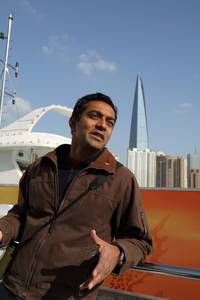
“We are the energy generation, but we as Americans do not fundamentally understand what energy is, where it comes from, how we use it, and how much we need,” remarks Dr. M. Sanjayan, host of the new Discovery Channel four-part documentary Powering The Future. Indeed, any honest retrospective of the modern energy crisis first requires a primer reviewing how our dependence on major fuel sources (coal, oil, and natural gas) came about and the unique challenges that breaking it poses. I consider myself a fairly well-informed individual, particularly on scientific matters, but in watching the first installment, The Energy Revolution, even I was amazed at the sheer interconnectedness of major electrical grids, and how much links us globally in energy delivery vessels. A German electrical engineer in the documentary compares running a major grid to being an air traffic controller.
Much of the current hope for alternative energy sources rests in grandiose ‘silver bullet’ solutions. Scientists at the National Ignition Facility are using the world’s biggest and highest powered lasers as a power source for smashing together the hydrogen atoms in a droplet of water, resulting in nuclear fusion. This mimics the way that the sun makes energy, and, if successful, would harness a limitless supply of power. Nuclear fusion research has been ongoing since the 1940s, but has never been applied successfully on a large enough scale like the undergoing experiments at the Ignition Facility. [ScriptPhD.com was recently granted an exclusive tour of the Ignition Facility, which will be covered soon in a separate post.] Another growing ‘silver bullet’ sector has been the harnessing of two natural energy sources—the sun and wind. Wind energy is the largest (and fastest-growing) alternative source of energy. Denmark gets about 20% of its power from wind sources, while the United States gets approximately 1.2%. Photovoltaic, or solar panels, more mobile and aesthetically pleasing than wind turbines, are another popular source of alternative energy. Little money has been poured into researching photovoltaic grids as a large-scale source of energy, it holds promise. The 89 petawatts of sun that shines on the Earth each year is more than 6,000 times the 15 terawatts of electrical power consumed by human. Unfortunately, both of these energy sources face one insurmountable hurdle; their mercurial natures. Our modern lifestyles require a constant influx of power, but if the sun stops shining, or the wind stops blowing, solar and wind technologies are unreliable.
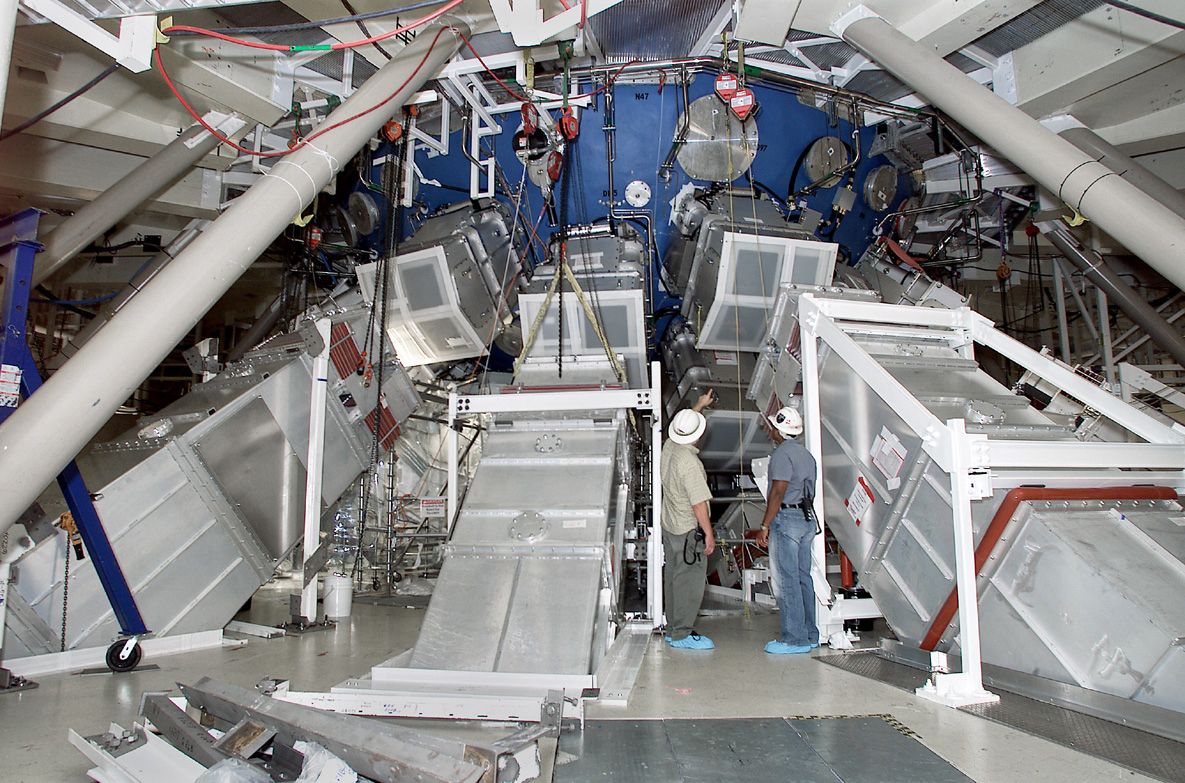
The reality is that moving energy consumption into the 21st Century will not happen with one grand discovery, but a microcosm of intermediary ones. Powering The Future provides some exciting insight into the body of research and creativity being applied to alternative energy sources. Many communities are powering themselves through clever solutions, such as Japan generating solar energy in outer space and then beaming it to Earth, or New York City harnessing wind energy from tidal waves in the East River. No role is rendered more important in this documentary than that of private organizations and academia in leading innovation and discovery. Bay Area-based Makani Power specializes in capturing and storing high-altitude wind for abundant power and energy. Caltech University solar electrochemist Dr. Nate Lewis has invented a thin coating of paint containing chemicals that catalyze the sun’s energy for power. Paint your roof, get free solar energy! In fact, just today, General Electric announced a $200 million smart grid contest for cleaner and more efficient electrical grids. The California-based X-Prize Foundation has even gotten in on the act, recently announcing a $10 million oil spill cleanup challenge.
Even those that consider themselves knowledgeable about environmental issues and research and technology of clean energy will have a lot to learn from Powering The Future. The special does an exceptional job of laying out the complex science behind concepts such as fusion and large-scale electrical grids for a lay audience to understand, while not glossing over current research in industry and academia. Moreover, rather than approaching the issue with the typical heavy-laden, moribund fatalism one often finds in these specials, Powering The Future leaves one feeling hopeful about the range of innovation happening at all levels worldwide, and the remarkable commitment of both academic labs and private companies for tireless discovery. It is this very entrepreneurial, resilient, and utterly human, attitude that will power our future more than any fossil fuel ever could.
Powering The Future premieres on the Discovery Channel on Saturday, July 17, 2010 at 8 PM ET/PT.
Finally, we encourage you to read to our exclusive one-on-one interview with Dr. M. Sanjayan, lead scientist at The Nature Conservancy, as we expand the energy discussion of the mini-series to global solutions, his thoughts on the oil spill crisis, and ways that we can impact our dependence on fuels right now.
ScriptPhD.com: Joining us today is Dr. M. Sanjayan, who is the lead scientist at The Nature Conservancy. He has a PhD from UC Santa Cruz, and is the author of “Connectivity Conservation.” His articles and appearances range from the most prestigious scientific journals to popular media such as The New York Times, and Vanity Fair and TED Talks. Thanks so much for joining ScriptPhD.com!
M Sanjayan: You’re welcome, thank you!
SPhD: It’s impossible to have a conversation about the nexus of environment and energy without addressing the oil spill afflicting the Gulf Coast. Is it safe to call this THE environmental catastrophe of our generation?
MS: Well, the generation’s not over yet. From the time of my recent memory, this has been one of the bigger wake up calls we’ve had.
SPhD: Why do you feel that way?
MS: It happened at our doorsteps, it is impacting a couple of industries that are hugely important to the United States. About a third of all the seafood you eat comes from the Gulf. About an eighth of the oysters you eat come from the Gulf. It’s a massive industry for fisheries and it also supplies about a third of all the gas that goes to heat up your house. So the Gulf is a pretty important place for America at our doorstep or seastep.
SPhD: Well, see, there’s one of the conundrums that I feel lies at the heart of this mini-series. If we take the Gulf Coast example, our President (Obama) is certainly no foe to environmental causes, and yet even he concedes that stopping offshore drilling is not practical given our thirst for oil and energy consumption. What are your thoughts on this?
MS: Well the reason that energy remains such a telling topic for our documentary is that it’s present in our entire lives. Look, I’m a pretty informed consumer and scientist, and even I was shocked at how much energy I use and all the kinds of insidious ways that energy goes into everything I do. And so if you’re looking for the culprit, in some ways, the culprit is us, it’s our thirst for big oil and it’s our thirst for this unlimited supply of energy with no repercussions, which causes us to endanger our future generations. So, it’s very difficult to point fingers when it comes to this crisis in the Gulf, even though what happened there is clearly something that BP is going to be responsible for.
But once you step a little bit beyond that, you quickly realize that how we got here and what we depend on? Still fossil fuels. I mean, [this dependence] makes hypocrites of all of us, and I think that’s the hardest part about it. That’s why it’s not comfortable to talk about, and that’s why it’s so important that we have a thoughtful dialogue about it in this country. And that’s what the show tries to do. I mean, we are addicted to just one form of energy but guess what? There’s so many other forms of energy just waiting there to be tapped. But none of them are going to come without a cost.
SPhD: In speaking about this mini-series, one of the things I adored about the first installment is that it really avoided the gloom and doom that you find typical in stories and shows pertaining to energy. Rather than dwelling on the enormity of the challenge posed to scientists, it actually made me feel hopeful about the creativity and discoveries that ARE actually out there already! Do you feel the same way?
MS: I really do, and I think that that was a conscious decision. When you talk to innovators and the people looking for the so-called “silver bullet,” you realize that Powering The Future talks to some really excited young people who are on the cusp of making gigantic breakthroughs. It’s a really sensitive section that you get carried along with. You don’t want to avoid the consequences of what we will look like if we reach 2015 with 22 kilowatts of energy needed to power our lives and all of that coming from fossil fuels. That will be a disaster and there’s no way to spin that. But we wanted to do a show that allows you to see the possibilities. People can only deal with so much – you have to give them a positive direction.
SPhD: You just mentioned the “silver bullet” – that leads perfectly into my next question. So based on your work, your travels and the research you performed in putting together this documentary, will we see the so-called “silver bullet” in our lifetimes? And if so, what are the commitments that must be made on an international level to see that happen?
MS: I wish I could tell you that there was a silver bullet and that I’ve gained a glimpse of it. I was looking for it, and I wanted to see it, and I wanted to believe in the idea of it. You’ll see that in the show. The truth is it’s more like a silver buck shot. There are lots of smart people coming up with lots of cool ideas. Some of them will go into practical use, and will be implemented on a large scale. So, there’s a lot of hope, but I don’t think it’s as simple as saying that there’s one solution that will solve it all. Now, you never know. You could see a breakthrough that happens.
The important thing is – imagine if we lived in a world where everything and everyone was completely free and available. It doesn’t mean that war and hunger and all these other things go away. There are other limiting factors that we could run up against. So, in some ways, we really want to leave it as a silver buck shot approach, because each solution also has some level of problems.
One of the more interesting [approaches] that we saw was high-oxygen kites being flown off of the San Francisco California coast. They’re really cool! You’ve got these giant kites that basically aeroform. They’re like wings of planes that fly a thousand, two thousand feet up [in the air]. And the wind blows through them, and they generate power, which then comes down a pipelines, shoots through a wire down to the Earth. What’s neat about it is when the wind drops, the power goes back up from the grid and so it stays up like an airplane. Or smart cars that you can plug into the grid, which allows you to start the car, but the car also acts as a [simultaneous] battery for the grid. Or the FULLY electric Coda vehicle that will go on sale later this year in California that will give you 100 miles. What’s amazing about the Coda for me is when you get into the car, it looks perfectly normal. It’s ordinary looking – you wouldn’t even know it’s electric.
SPhD: Well, I know one of the causes that you’re very passionate about, and have written about extensively, is poverty and coservation. On the one hand, it’s wonderful to see so many people climing out of poverty in China and India, Southeast Asia, also in Central and South America. On the other hand, with this mobility comes tremendous energy usage and environmental devastation. How do developed countries balance fostering this growth, yet holding these countries accountable for their emissions, for example through cap and trade systems?
MS: You know, people just want a better life and that’s just the truth of it no matter where you go. What is surprising, and it even shocked me, was the disparity in energy use between the Western world and countries like India or places in Africa. For my lifestyle, I use between 120-180 100-watt light bulbs’ worth of power all the time. So, about 18,000 Watts of power to power my life. The thing is, if you go to Asia, the average Asian uses about fifteen light bulbs for their life! And the average African even less – five or six. It’s an enormous difference in quality of life. And they want it to be better. There’s more people joining the middle class in India than the entire population of the U.S.
The best way we can help these countries make the transition is through economic stability, meaning better lives, happier lives, less war. Because there’s more stability and more trade. So I think the best thing that we can do is really spur innovation and development, leapfrogging technology. The partnership that we have with China, for example, to make batteries, that are a great collaboration, for the Coda car. So the Coda is made in Los Angeles, but the battery is made in China. Poor countries cannot simply abdicate their responsibilities. They’re the ones that are going to be the hardest hit by climate-induced changes. And so they have to play a role as well.
SPhD: Absolutely! Speaking of innovation, in the first installment of The Energy Planet, there are a lot of academic labs and private companies that are innovating green technology even as a lot of world governments are wringing their hands about solutions. How do you feel about some of these private companies, like Tesla Motors or the X Prize foundation here in California in enacting innovation and spurring real change?
MS: So in making Powering The Future, I thought we’d spend most of our time talking to governments – and we do do that to some degree. Energy ministers in China, and admirals in the Navy. But we found that the most passionate advocates were the private industries and the private sector. To me, that’s a very Western philosophy, but it does apply nicely. I think it’s of huge importance. Look at these big revolutions that have happened in our lifetime, like the digital revolution, and now this new revolution that’s happening with space technology or in human genetics. Governments have to play a role, and that role can be very instrumental, both in thinking about the public good and in spurring innovation through subsidies or tax breaks.
But… over and over again, I go to conferences and I come away with this notion that governments don’t lead. It’s people who lead, and the governments will follow. That’s why things like X Prize and these early innovators being out there, maybe a little ahead of the game, are hugely important. It’s exactly how the technology revolution happened with the internet, and I can see that happening with energy. It’s more complicated with energy, but it’s hugely important indeed.
SPhD: So, recycling is one of the quickest, simplest and most impactful ways that we can save energy and protect our planet. I grew up in Seattle, a very ecologically-minded city, where recycling was not only encouraged but ubiquitous, so it was ingrained in my life from an early age. But as I travel around the country, it’s shocking to me how many places there still are where the concept is foreign to the point of being anathema to the way people lead their lives. Do we go the way of the Japanese government, where you actually get fined for not separating your garbage, and they end up collectively recycling or composting anywhere from 70-80 percent of their trash, or do we provide some kind of an incentive?
MS: I didn’t realize how important that part is to solving the energy puzzle. But, one of my favorite parts of the mini-series was when we were visiting the Empire State Building, and this guy who does all the retrofitting for the building says to me “The greenest buildings are the ones that are already built.” And what he’s saying is instead of building from the ground up, you’re taking what’s already existing and recycling it. So recycling, whether on a grand scale – retrofitting a building or a rooftop garden – or on a microscale, in your own apartment, is really important.
I live in Montana right now, and it’s a great town really, but it’s still really hard to recycle there. Especially glass. And I asked them about it and the truth of the matter is that the costs to ship that glass are so expensive, that those costs prohibit recycling on a small scale in my town. It’s a complicated question. We should encourage people to recycle and to encourage their local governments to enable recycling. But sometimes you realize that it does come down to arguments of cost. As long as energy is cheap, artificially cheap (which it is), it makes it impossible to enable recycling and other programs that can make a difference on the scale which you and I would like to see happen.
SPhD: You literally traversed the globe to put together this special and you met everyone from scientists, environmentalists, oil workers and ordinary people. Can you recall for us one moment – any moment – from these journeys that really struck you and made an impact?
MS: China was pretty incredible. Because I never expected to spend that much time in the cities in China. Usually I’m going out to the countryside. There really was one moment that was very amazing to me. We went out to a little village outside of a town called Rizhao, which is China’s solar city. A city of about 3 million people that’s gone completely solar in most ways. So we went to this tiny little village right outside it, and walked into a tiny little house that a woman owned with her family. There’s five people in the family, and two rooms in the house, and a tiny little bathroom/kitchen.
She had a new shower that she really wanted to show me. It was basically a pipe that went from her room into a little private shower area. And it has hot water now because of a solar thermal unit that she’s put up on the roof. And she’ll have it paid off in five years because of the savings. She told me that in the winter, she used to endure a six-mile walk to a public bath house to have a hot shower. And now this [solar cell] completely changed their lives. Meeting her, I understood that the energy revolution is not just for the affluent and the well off, but rather it’s for all scales of life. The other thing I got in China was a lump of coal – and I actually have it sitting on my desk. And whenever I look at that lump of coal, I realize what the need is all about.
SPhD: Well, I really appreciate you joining us and giving us some insight into your travels and work.
MS: I guarantee you after watching this special, you’ll never eat a hamburger or fly a plane the same way again.
~*ScriptPhD*~
*****************
ScriptPhD.com covers science and technology in entertainment, media and advertising. Hire our consulting company for creative content development. Subscribe to free email notifications of new posts on our home page.
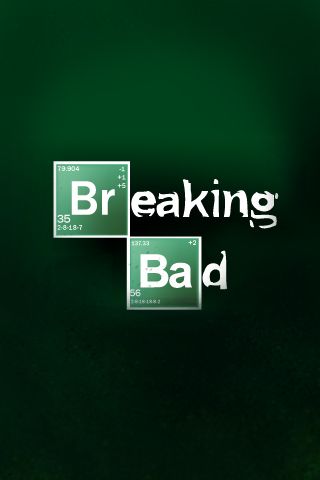
Last year around this time, ScriptPhD.com posted Breaking Bad, Chemistry Good, an in-depth article about AMC’s breakout hit Breaking Bad, and its stunningly accurate science content. Walter White, the show’s anti-hero, is a cancer-stricken high school chemistry teacher who starts cooking and dealing methamphetamine for financial security. In our article, we highlighted several clever uses of chemistry throughout the show’s run that not only integrated brilliantly into the plot but had realistic real-world applications as well. What a difference a year makes! Last week, Editor Jovana Grbić sat down with Breaking Bad‘s delightful Creator and Executive Producer Vince Gilligan to talk about the show’s origins, the science, and some behind-the-scenes secrets that will surprise even dedicated fans. We hope you enjoy reading our interview as much as we enjoyed chatting with him. The secrets of Breaking Bad, under the “continued reading” cut.
ScriptPhD.com: As a scientist (and PhD chemist in particular), Breaking Bad’s premise was very intriguing to me from the start. Can you share a bit about the inspiration for its origins?
Vince Gilligan: You know, Jovana, I wish I always had a better answer for where it all comes from. But I only can put a date to things—I only seem to remember when ideas came to me. In this case, Breaking Bad was an idea that came to me when I was speaking to an old college friend on the phone. He and I are both writers, and were both bemoaning the fact that—this was was about 2005—we were having trouble getting work and we were wondering where our next writing gig was going to come from. We thought instead, maybe we should switch occupations. Maybe we should buy an old RV and put a meth lab in the back and ride around in the Southwest. And we were joking around, but this character that became Walter White jumped into my head very quickly, right in the midst of this phone conversation. That’s when the idea came to me!
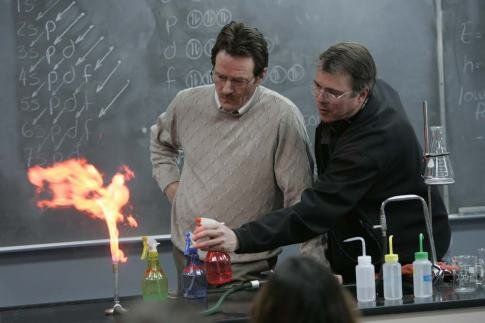
I have to say, as far as the science angle goes, I’ve always loved science, and yet I never had any real facility for it. I’ve always been a terrible student of mathematics in high school and in college. I’ve never even taken chemistry, I hate to admit it. But I’ve always loved science. And for most of my life, I’ve been a subscriber of Popular Science magazine and Popular Mechanics. But I’ve never made the jump from Popular Science to Scientific American! I don’t have a deeper understanding, but I love the idea that there are real concrete black-and-white answers in science and math, that we don’t unfortunately get in the rest of our life. The world, and our lives, is full of gray areas and uncertainties and opinion versus fact. And yet in mathematics, 2+2=4 and always has and always will. In science, certain chemicals put together in a certain way always create the same compound. I love that idea about science and I always have. I just wished in my heart of hearts that I had a deeper facility and understanding for it, but I have to say it is fun to live it by proxy and to write about a man who has a very profound understanding of chemistry and of science.
SPhD: I find it ironic hearing you say that, because a lot of people who are far less humble about their scientific capacity, their shows are far less accurate to incorporate it. Breaking Bad is one of the few shows or films that we have given a top-notch grade to for scientific accuracy and plausibility, allowing for some Hollywood liberties, of course. Who are some of the people that you consult with to write the chemistry experiments and tidbits, and what has been the general reaction within the science community?
VG: We have a lot of really good help. We have a woman named Dr. Donna Nelson, and she is the Associate Professor of Chemistry at the University of Oklahoma. When Breaking Bad first went on the air, she contacted our office pretty early on (a few episodes in) and she said she liked what we were doing and if she could ever be of any help to us, she’d be happy to be a resource. And we have taken her up on that offer, and she has been a resource to us over the seasons. We run certain moments that happen in the story by her is as accurate as possible, and she’s been a great help. I know Bryan Cranston [Walter White], our star, shadowed a UCLA chemistry professor for a week or two before he shot the pilot, to immerse himself in the world of chemistry, not just to learn a bit about chemistry, but to see what a prototypical chemistry professor looks and sounds and acts like. Also, a part of my original inspiration, to be fair, was my long-time girlfriend Holly, her brother Hank, who I borrowed the name for Walt’s brother-in-law from, got a PhD in chemistry while he was in the Navy and is a chemist for a government organization out East and is studying red tides off the Atlantic coast. I also cannot leave out a man named Dr. Victor Bravenec, and he’s a DEA chemist based out of Dallas. I have to give great credit to the DEA, because they have been helpful since Day 1 on our Pilot, and Dr. Bravenec in particular has been helpful with the chemistry of methamphetamine and the particulars of how it is created in a laboratory. I’m so proud of the fact that you’re reacting to how realistic the chemistry is on our show, and so much of that is due to our wonderful advisors.
SPhD: One of the things I love most about Breaking Bad is that chemistry acts like an integral character, one that plays a very important role in Walt’s identity, the cooking and production of the meth, and in some cases, their very survival in some pretty hairy situations (as in the case of the fulminated mercury and homemade battery). Was it always the plan to have it be such a big part of the show or is that something that evolved?

VG: I did always like the idea that this would be a cable TV version of MacGyver. That was not first and foremost when I was coming up with the idea. First and foremost to me, the show is a character study about a man who is undergoing a radical transformation. He’s transforming himself from a protagonist to an antagonist. The whole show, in that sense, is an experiment to continue chemistry analogy. But there was always an element that I thought we could have fun with is the MacGyver aspect, as it were and the idea of using [Walt’s] knowledge to get him out of a jam every now and then. And I have to confess, as much fun as we have with that stuff, the show has taken so many dark character turns as he progresses from a good guy into a bad guy that of it goes by the wayside, although not intentionally. But those moments you speak of were a lot of fun to come up with and a lot of fun to write, and I’m hoping we’ll find a way to insert more of those moments as the season progresses.
SPhD: You’ve brought it up, so let’s just talk about where Breaking Bad goes from here. To me, Season 1 was very much about the construction of these characters, their situation, the “building up” of their individual new worlds. In many ways, Season 2 was the de-construction, where each character felt something fall apart in some way; Walt’s lies and second life, Jesse’s addiction and girlfriend’s death, Skyler’s trust in Walt, and possibly Hank’s DEA career. What do we look forward to in Season 3?
VG: Good question. And I hate to admit it, but I’m not the best at looking forward. You know the old expression “You can’t see the forest from the trees?” We are so deep into these characters’ lives that sometimes, I myself and my writers are not the best people to ask for a complete bigger picture explanation of what in fact is going on. All I know for sure is that Walt is in the process of change and transformation, and it’s an interesting experiment, one that we’re doing for the first time, as opposed to a repeated experiment. We can’t even predict the outcome!
SPhD: What’s funny is seeing the first few episodes of Season 3, I get the feeling Walt misses the badness and the danger of it all. He wants so badly to be good and to repudiate this person he’s become, and yet, I get the feeling he misses some of the perks and the thrills that it brought. Am I completely off-base here?
VG: No you are not off-base at all. That’s very astute. He’s an interesting character, because a lot of what this show is about to me is the human capacity for rationalization. We all rationalize our behavior to ourselves, our ideas, our actions. It’s just something that human beings do, it’s part of us. We usually do it in small, minor, insignificant ways. But Walt takes that to the nth degree. He stretches that to the breaking point. He’ll go around saying to himself, and when pressed by others to them, that this criminal behavior he finds himself engaged in is done purely to aid his family. He does it for their financial benefit. And yet we put the light on that pretty early in Season 1. If you’ll remember, he gets this offer from his rich former lab partner for a great job that sounds like it’s no strings attached and with all the money that he’ll need to treat his cancer and for his family to be financially solvent. And lo and behold, he doesn’t take it. That’s one of the moments I’m most proud of on our show, because prior to that moment, the show could have gone in a very different direction—we could have had the show become a weekly procedural. This week the meth lab burns down, and next week his money gets eaten by rats, and the next week after that the police arrest him, but he has to weasel out of that.
But early on we all recognized that a show like this can’t reach its full potential if we don’t really examine this guy at a deeper level. A lot of people, millions of people, especially with the economy being in the toilet, face similar situations, unfortunately. People face the issues that Walt faces, where money is a real problem. And most people don’t decide to cook crystal meth! So we realized early on that Walt has to have some kind of darker component to him that he’s perhaps always had. This is a man who is, above all else, prideful. And he bursts with pride at this avocation that he’s taken up, and he’s prideful about his product, about its quality. In so many ways, he’s just a sad little man who has felt passed over his whole life. He feels like he hasn’t really existed until he’s become a criminal, until he’s broken bad.
SPhD: My favorite episode to date has been the Season 2’s Peek-a-Boo, and its exploration of the beautifully complex character of Jesse Pinkman. His filial relationship with Walt is a cornerstone of this show, and has rather ironically blossomed amid the self-destruction of Walt’s relationship with his family and Jesse’s estrangement from his own parents. Can you talk about their relationship and your take on how these two individuals fit in each other’s worlds?
VG: Absolutely! It is a very interesting relationship, and it’s one that I didn’t realize what it would become. I’d love to say I knew from Day 1 when I was writing the pilot what this show would be, exactly, and all its dynamics, but the truth is that they’ve been a work in progress. A lot of this grows and creates itself, and the actors and writers bring so much to it, and it’s amazing to stand back years later and realize what you’ve had a hand in creating. But yes, it’s very much a father-son relationship between Walt and Jesse. And I have to say, as further evidence that this wasn’t the original intention of the show, my intention was to kill Jesse off at the end of Season 1. He was going to be kind of a character who helped Walt get into the business, and then got violently killed in a drug deal gone wrong. And the whole point of his existence would have been to get Walt into the business and then give Walt a reason to feel very, very guilty, further fueling bad behavior on his part. Luckily, we hired Aaron Paul to play Jesse, and he is such a fine young actor and so talented and charismatic that very quickly on, like in Episode 1 or 2, I realized that there was no way I was killing him off.
SPhD: And where do they go from here? They’re in a tenuous place right now. Together but apart, not really sure where things are going.
VG: It’s interesting, you put your finger on quite a lot of it. And it’s very much a love-hate relationship between these two guys, but it’s mostly love-hate on the part of Jesse. There are times when I’m not sure Walt has any regard for Jesse at all. Very often, there’s a coldness to Walt, and a desire just to get the job done and he sees Jesse as a useful tool but not much else. He doesn’t seem to have much regard or respect for Jesse, so every now and then, when he throws Jesse a scrap of respect, you feel how thirsty Jesse is for that. It’s funny, Jesse is sort of the moral center of our show. Even though he started off in the business before Walt, and Walt was a straight-arrow character before we meet Jesse, somehow Jesse seems to have a more refined and defined moral center. Very often, Jesse is the one who says “Should we really be doing this? Aren’t we being greedy? Haven’t we made enough money already?” He really is the moral center of the meth trade that we portray on the show, and Walt, who should be a father figure to him, who should be ushering Jesse out of the business, and a large part of us as the audience wishes that he would do the right thing. We know in our hearts that he most likely never will.
SPhD: They’re all beautiful relationships and I can’t wait to see where they all go. I love that you’ve even made me hate Skylar [Walt’s long-suffering wife], which I never thought I would do. I’m so sorry for that!
VG: It’s so funny, and I’m glad you brought that up, because you are definitely not even close to being the first person to say that. It’s just a funny thing about storytelling. Even when your hero is not a nice person, and he’s doing bad things, because he’s your protagonist, if you’re along for the ride, then you start to see the world through his eyes. It’s the nature of storytelling. It’s the same thing when you’re watching The Sopranos or some other show where there’s someone who is pretty much a reprehensible character is nonetheless your protagonist. You’ll root for that person to succeed. And right now, Skylar gets in the way, on a purely mechanical level, of Walt’s success and happiness and therefore we see her as an obstacle and we don’t like her for what she’s doing. So you’re not alone in feeling that way. But the funny thing is, I see Skylar as the good guy and Walt as the bad guy. I love Walt! He’s a great guy to write for, but he’s kind of a monster when you think about it. He shouldn’t be breaking back into the house, trying to get back into her good graces when the things he’s done and the lies he’s told really make him not the good guy. She’s being heroic when she doesn’t tell the police on him.
SPhD: Thanks, Vince, and we really appreciate you joining us!
VG: Thanks, and it really makes me feel good to hear that you think the science is authentic, because we do our best, and we will continue to.
Interested in watching the show? Start with this brilliant six-minute catch-up video:
Season 3 episodes of Breaking Bad air Sundays at 10 PM on AMC.
~*ScriptPhD*~
*****************
ScriptPhD.com covers science and technology in entertainment, media and advertising. Hire our consulting company for creative content development.
Follow us on Twitter and our Facebook fan page. Subscribe to free email notifications of new posts on our home page.
]]>
